#God the 1977 film has a special place in my heart
Explore tagged Tumblr posts
Text
1977 animated Bilbo Baggins is so friend shaped. So very round. With the biggest wettest eyes you’ve ever seen. I love him
#God the 1977 film has a special place in my heart#I love that they kept so many of the songs;;;#yes whole sections of the story were cut or rushed and the movie is very short so it’s not perfect but;;; there’s heart to it#For better or worse it will always be my fav adaptation
2 notes
·
View notes
Text
10 Movies You Should Watch This Halloween 2017
October is here, and now is the time to get into the Halloween spirit! Instead of the traditional “best of” Halloween movie list (don’t need to mention yet again how much I love The Shining, the first two Halloween films, and The Exorcist), here are a list of 10 movies (in release date order) that may not be as well known or not usually listed among the upper echelon of scary movies but perfect for this 2017 Halloween season and worth a look.
Eraserhead (1977)

“In Heaven everything is fine…”
The spectacular new season of Twin Peaks just came to an end last month, so this Halloween would be the perfect time to take a look back at David Lynch’s brilliant feature film debut on its 40th anniversary. The film create a sense of total dread and darkness in its beautiful black-and-white cinematography, eerie sound design, and well-acted performances. It is pure horror! The film has inspired a significant number filmmakers over the years, including Stanley Kubrick while he worked on The Shining. It may be one of the most important movies ever made!
Phantasm (1979)
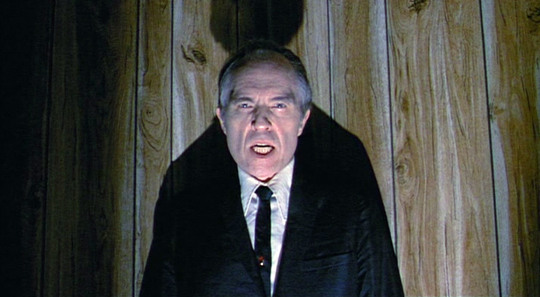
“Boooy!”
This cult-classic horror film was remastered in HD this past year (with the help of JJ Abrams) so this Halloween would be the first time to experience the film in its full visual glory. I love the creepy music, eerie sets, and low-fi feel of the film; feels like being in a haunted house. Really high quality for such a low budget and some really good scares, especially Angus Scrimm as the menacing Tall Man. If you like movies such as Stranger Things, Super 8, and the Halloween series you will love Phantasm!
Vincent (1982)

“Vincent is nice when his aunt comes to see him, but imagines dipping her in wax for his wax museum.”
This early Tim Burton stop-motion short film is a masterpiece! Vincent Price provides the narration with great inflection. The animation is top-notch and some of the best stop-motion work ever; love the dark visuals and music. At some points it feels like we are getting a glimpse at Tim Burton’s childhood. The short celebrates its 35th anniversary this year, and its influence shows in the many stop-motion films that have been released since (i.e. Nightmare Before Christmas, Corpse Bride, ParaNorman, Frankenweenie). It’s almost as if all stop-motion animated films have to be horror-themed and this one was the first.
Halloween III: Season of the Witch (1982)
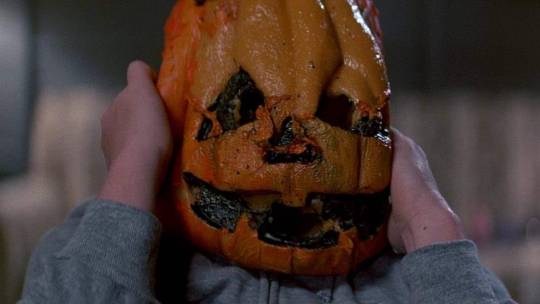
“Happy, happy Halloween, Halloween, Halloween! Happy, happy Halloween, Silver Shamrock!”
Most overlook this film and pass on it as ���the one without Michael Myers,” but Season of the Witch is actually a great horror film in its own respect. John Carpenter’s idea of having a different Halloween-themed story with each sequel while maintaining some of the same crew and cast (albeit in different roles) was way ahead of its time and now seems to be commonplace with American Horror Story changing its story and characters every year. I love the cinematography, special effects, scary soundtrack, especially the dark “Silver Shamrock” commercial song. The movie also celebrates its 35th anniversary this Halloween. Definitely worth another look because it is actually a good horror movie, especially if one doesn’t think of it as a Halloween sequel.
Return to Oz (1985)

“There’s no place like home!”
Many see this movie as the weird Wizard of Oz sequel. However, it stands on its own as a truly unique fantasy adventure film. It is actually quite dark in parts; more in the likes of The Neverending Story or The Dark Crystal than the 1939 original. This movie is great for Halloween with the fall setting, the Halloween visuals (i.e. Jack Pumpkinhead, the thousand-head wicked witch Mombi), and the spooky interpretation of Oz.
Stephen King’s It (1990)
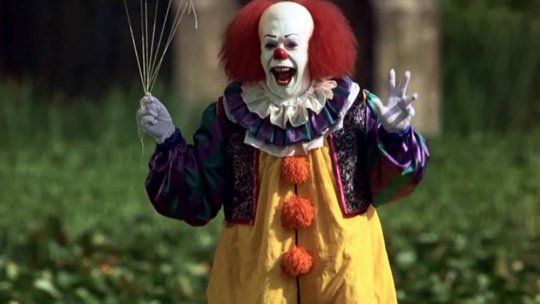
“They ALL float down here. When you’re down here with us, you’ll float too!”
If you like the new IT adaptation (or if you don’t), definitely check out the 1990 original. The new film has more impressive special effects and is a better movie overall, but the 1990 miniseries holds a special nostalgic place in my heart and is much scarier thanks mostly to Tim Curry’s terrifying performance as Pennywise the Dancing Clown. This film also would make a great introduction to the horror genre to younger viewers because it scary without the excessive gore or gratuitous sex found in many horror films.
Halloweentown (1998)
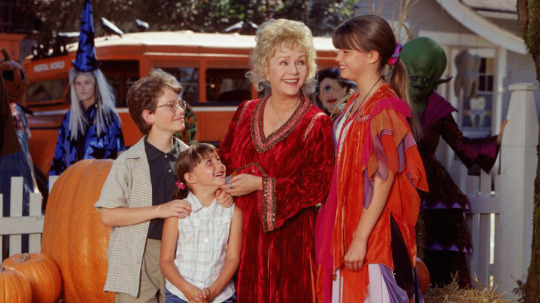
“Being normal is vastly overrated.”
With the passing of star Debbie Reynolds this past December, this Halloween is the perfect time to pay tribute to the late actress by watching one of her best films. My siblings and I watched this film and its sequels (the 2nd one is good too, 3rd and 4th are not so much) every Halloween at our grandparents’ house. Not really scary as much as it is a fun Halloween movie. I love the decorative set designs of the town (it’s a place I would love to visit if it were real) and the cool costumes used for all the monster characters who live in Halloweentown. It’s a movie all ages can enjoy!
The Sixth Sense (1999)

“I see dead people.”
With writer-director M. Night Shyamalan making a successful career comeback earlier this year with Split, this Halloween is the perfect time to take a look back at the film that made him a celebrity filmmaker. The atmosphere and performances are incredible! I used to watch this film for the horror elements as a kid and in my teen year, but now as an adult, I see this more as a film about love and relationships. There are some scenes that really hit me deeply on an emotional level, especially in the scene where Cole tells his mom how much her mother really loved her and the final scene with Malcolm and his wife. One watching this movie can see why Shyamalan was at one point thought to be the next Spielberg.
Rob Zombie’s Halloween (2007)
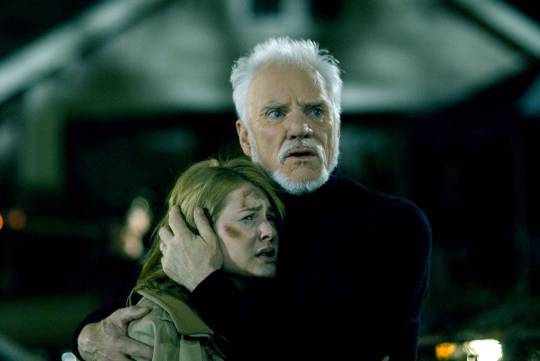
“Behind these eyes one finds only blackness, the absence of light. These are the eyes of a psychopath.”
This Halloween marks the 10th anniversary of Rob Zombie’s Halloween film (my dad and I saw it theaters on opening day when I was a high school freshman). It is quite possibly the best horror film of the past 15 years! Though not as much of classic or as scary as the 1978 original, the 2007 film stands above other horror remakes (i.e. Nightmare on Elm Street, Friday the 13th, The Fog, Prom Night, Psycho, Amityville Horror) and succeeds by being its own thing and not trying to be a carbon copy of the original. I especially like the performances including Malcolm McDowell as Dr. Loomis and Daeg Faerch as young Michael Myers. Also some really great cinematography and use of colors and overall pacing that gives the story a grand scope. Plus it has a killer soundtrack featuring awesome songs like “God of Thunder” by KISS, “Baby, I Love Your Way” by Peter Frampton, and “Love Hurts” by Nazareth.
Trick ‘r Treat (2007)

“Always check your candy.”
Good elements of dark comedy are sprinkled throughout this colorful horror anthology. I like how the film is several Halloween-themed shorts that are all tied together. It’s the rare horror film that is both fun and scary! Also check out writer-director Michael Dougherty’s short animated precursor “Season’s Greetings,” really retro and creative!
Happy Halloween! By the way, as an added treat, here is a picture from my animated Halloween short in post-production called “Halloween Cat.”
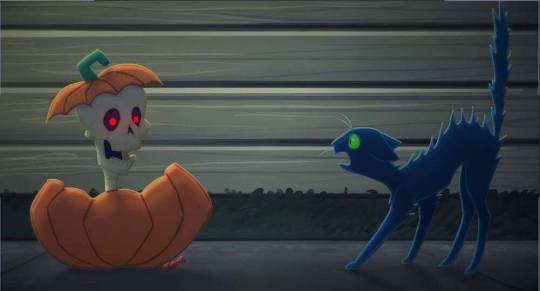
#halloween#movie list#movies#michael myers#John Carpenter#rob zombie#m night shyamalan#trickrtreat#sixth sense#halloweentown#tim burton#vincent#return to oz#it#stephen king#tim curry#horror#american horror story#halloween iii#season of the witch#eraserhead#david lynch#phantasm
498 notes
·
View notes
Text
Star Wars: The Last Jedi, Rant
Ok, it's been long enough...
There are probably spoilers here. This is a Star Wars rant.
Episode VIII is a fantastic film. "Let the past die, kill it if you have to." "This is not going to go the way you think." "We are what they grow beyond." The message is strong and clear: the old dies to nourish the new.
Every franchise "fanboy" who has decidedly rejected The Last Jedi as canon is blinded by expectation and fearful of change—tossed into a crippling conservative protectionism of a cinematic universe that never belonged to them.
Was this the installment that emboldened the original series in all its glory? Hell no. In the same sense that 1970s politics would have no place in shaping 21st century society. Johnson created a fun and powerful farewell to the black and white narrative structure of the original series by opening the flood gates to an ambiguity that not only aptly suits the audience's historical climate, but also complicates a 40 year old story in the same way that Star Wars literature has done quietly since 1977. And this is done simply by capitalizing on characteristics that were (sometimes subtly, sure) already intrinsic in the franchise’s construction.
Luke hides not out of cowardice of his environment, but out of doubt and fear in his own abilities which he projects onto Rey. The Skywalker bloodline is riddled with fear driven motivation (clearly demonstrated by Luke's interaction with Yoda in dagobah, and likely the reason for Yoda’s reprisal in TLJ). His arch makes perfect narrative sense, and Mark Hamill (his personal views aside) plays the part flawlessly.
The force is a magical energy that can be manipulated to do nearly anything by space samurai. That sentence is just as ridiculous as Leia's ability to move herself through space, Rey/Kylo's ability to communicate (we already saw a version of this in EpV), and Luke's projection. There is absolutely no valid argument that these phenomena had no place in the Star Wars universe.
Porgs are not marketing devices. Neither are wookies. Neither are ewoks. Porgs serve two purposes: 1. Practical. To explain the existence of the nature that exists on the Irish island Skellig Michael (Ahch-to) within the world of the film. 2. Balance. Porgs are emotionally stimulating, making the audience more vulnerable to the film’s dramatic moments, and they add comic relief which brings light-hearted fun to a plot which is otherwise fairly dark.
Star Wars is funny. It’s always been funny. Han smirks and quips back and forth with Leia every five minutes of screen time. Lando pokes and prods. Ewan’s Obi-Wan wisecracks. Jar Jar is in and of himself a jester. One of the biggest reasons we love the franchise is the laughter we enjoy amongst (again) a very dramatic and often dark story. EpVIII is not overly comedic. In fact, it’s one of the darkest films we’ve seen in the franchise. There is just enough humor to balance it out so you don’t leave the theater feeling depressed.
Supporting characters don’t need complex backstories or special treatment. Ackbar is far more important as a meme than as a piece of the Skywalker series. He gets no more than 10 minutes of total screen time in the entire 40 years of the franchise. His fate matches his value. We know as much (if not more) about Snoke as we do about Darth Maul, and that’s ok. As long as their plot significance is clear, we don’t need to know more. We got spoiled with info on Palatine, but that’s because his influence in the plot was far stronger than Snoke’s or Phasma’s. Snoke was a device to set up the characters we really care about, Kylo in particular. There will undoubtedly be literature written about Snoke (just as there already is for Phasma) for anyone who wants to delve deeper into those characters, but wasting valuable screen time on developing them would distract from the A plot.
Canto Bight is a wonderful addition to the Star Wars universe, and a completely necessary moment in the film to accomplish three big things: 1. Finn’s development from a coward into a rebel. Rose exposes to him a world which he has literally been brainwashed to be ignorant of. This moment humanizes him and evolves his character to justify his actions in the battle on Crait. 2. We learn to care about Rose. Her relationship to Canto Bight and its culture makes her a valuable character beyond her technical abilities. Again, she understands an underbelly of the Star Wars universe that’s necessarily complex in the overly saturated good vs evil binary. 3. It establishes the roots from which the film hints a renewed rebellion will arise. Without understanding the culture and characters of Canto Bight, we can’t understand why Leia’s admission that the galaxy has lost hope might be proven false. The setting is also just a fun expansion of the Star Wars universe and a satisfying reminder that there is a vastness to the world of the film. There exists life and culture outside of First Order ships and Ahch-to. Without Canto Bight, the film would be smaller and weaker.
Then there's the "I can't believe people take issue with this" points...
There are EQUALLY as many strong women (finally) as there are male characters. Get. the fuck. over it. It's about god damn time I can point to a popular nerd franchise and think my future daughter could find representation in something as cool as Star Wars.
This film has MINOR diversity (again, finally). Get. the fuck. over it. Three major non-white characters is hardly something to be proud of, let alone something to rebuke.
And I could go on….
The Last Jedi is a carefully crafted gem that was peer reviewed by a small army of industry-conscious fans who enjoyed the same original story as the rest of us. I understand the backlash but harshly disagree with its intention. Similar to losing a loved one (which, spoiler, we certainly did), this is a big transition in an important cultural artifact. It’s a reminder that this story needs to grow to survive, which simply is not possible if it spends all its screen time preserving the old and tired. Kathleen and Rian are “more interested in protecting the light than seeming like a hero” and I’m so happy to be alive to see this wonderful gift to humanity evolve into something new we can fall in love with all over again.
#Star Wars#The Last Jedi#rant#review#long reads#spoilers#episode viii#episode 8#lucasfilm#jedi#scifi#film#cinema#critique#anthology#series#trilogy#nerd#nerdy
11 notes
·
View notes
Text
Mustang From Famed ‘Bullitt’ Car Chase Heads to Auction

Steve McQueen piloted it in the movie “Bullitt,” and for the next 50 years it was mostly a ghost. Now it’s heading to auction, and the speedy dark-green 1968 Ford Mustang fastback is expected to break records when it crosses the block next week at a Mecum event in Florida.Bravely, its owner is offering the rusty, dented, largely unrestored car “without reserve,” which means it will sell to the highest bidder — however low that bid is.The seller, Sean Kiernan, a Tennessee horse farm owner, says he is not worried that the bid will be too low. He figures the price could approach $5 million. Certainly, he adds, the car will sell for more than the $3,500 his father, Bob, paid for it in 1974.It took only 10 minutes of screen time — the length of Hollywood’s most acclaimed movie car chase — for the Mustang (official color: Highland Green) to achieve immortality. McQueen himself raced it through the streets of San Francisco in pursuit of ill-fated evildoers in a black 1968 Dodge Charger.As its cinematic legend has grown over the years, it has become arguably the most iconic Mustang ever, out of more than 10 million sold since the model’s debut in 1964. But what happened to the one true Bullitt Mustang has been, until fairly recently, one of the great automotive mysteries.McQueen, who died of lung cancer in 1980, apparently owned it briefly, through his Solar Productions. In 1971, the company got rid of it and a sister model. Then it began its journey into obscurity, even as McQueen kept trying to find the car for his vast collection.He wanted the so-called hero car, not the second model used for interior and other static shots. But he couldn’t quite catch up with each successive owner. His best chance probably came when its second owner sold it to the Kiernans via a classified ad in a 1974 issue of Road & Track magazine.The ad read: “1968 ‘Bullett’ MUSTANG driven by McQueen in the movie … Can be documented. Best offer.” The ad (typo and all) included a phone number in New Jersey.McQueen tracked down Bob Kiernan in 1977 and wrote him: “I would like to appeal to you to get back my ’68 Mustang. I would like very much to keep it in the family, in its original condition as it was used in the film, rather than have it restored; which is simply personal with me.”Sean Kiernan still has the letter, to which his father did not respond.So the Mustang, still with its handling and horsepower enhancements added for movie duty, lived on as a daily commuter for the Kiernan family until it succumbed to clutch issues in 1980. It has been barn-bound most of the time since then.Its whereabouts finally started to leak out a couple of years ago, causing heart palpitations among the handful of outsiders in the know. An employee of Hagerty, the classic-car insurer, was called in to inspect and authenticate it, as was a Ford expert.The expert, Kevin Marti, said he gasped when he saw it: “Oh, my God, it’s real!” He said he had been called multiple times over the years to investigate other “Bullitt look-alikes.” Someone found the second Mustang in a junkyard in Mexico a few years ago; while still valuable, Mr. Marti noted, it does not have the same provenance or cachet as Mr. Kiernan’s hero car.“Ninety-eight percent of the original car is there,” he told Hagerty. “It’s an incredible artifact.”The question for Mr. Kiernan then became: What to do with it?A movie was discussed, but funding proved problematic. Ford, which has introduced two “Bullitt Mustang” homage models since 2008, was interested in showing it alongside its newer versions. Hagerty suggested placing it on the National Historic Vehicle Register.Ultimately, Mr. Kiernan decided to sell it. That decision wasn’t easy, he acknowledged, nor was his choice of the auction house to handle such a landmark sale. He selected Mecum, a less prestigious auctioneer perhaps than the big names in the business such as RM Sotheby’s and Gooding.RM sold a 1968 Ford GT40 used by McQueen as a camera car in the 1971 movie “LeMans” for $11 million in 2012. But RM also infamously botched the sale of a $20 million Porsche last year. Gooding and others specialize in full classics and European supercars.But cars from America’s so-called muscle car era are right in Mecum’s wheelhouse. Mecum also set a record in 2019 for sales of Mustang-based cars when it notched a $2.2 million sale for a 1967 Shelby GT500 Super Snake.The auction, on Jan. 10, will be televised on NBCSN, which is likely to result in even greater interest.Mr. Kiernan’s decision to offer the car in a no-reserve sale is highly unusual; historically significant cars typically might be offered with a reserve, or a minimum price the seller might accept. If the bidding did not meet the reserve price, the owner would retain the car.Mr. Kiernan decided, “I don’t want to sell the car twice.”A Hagerty spokesman, Jonathan Klinger, said Mr. Kiernan probably had no need to worry.“There is still a very active portion of collector-car culture that thinks of Steve McQueen as the ultimate car guy,” he said. “The King of Cool.”Mecum’s founder and president, Dana Mecum, estimates the Bullitt Mustang will sell for at least $3 million. McKeel Hagerty, the insurer’s chief executive, predicted something closer to $4 million.McQueen-owned or -driven cars have a history of fetching premiums. A 1967 Ferrari 275 GTB by Scaglietti that he owned sold for $10.175 million in 2014. In 2015, Mecum sold McQueen’s 1976 Porsche 930 Turbo for $1.95 million — a good five times the value of a typical Porsche Turbo.Mr. Kiernan said he would be happy to see the Bullitt find a new home, even though it has been in his family for 45 years.“It has to go,” he said. “I only have a two-car garage.” Read the full article
#1augustnews#247news#5g570newspaper#660closings#702news#8paradesouth#911fox#abc90seconds#adamuzialkodaily#atoactivitystatement#atobenchmarks#atocodes#atocontact#atoportal#atoportaltaxreturn#attnews#auction#bbnews#bbcnews#bbcpresenters#bigcrossword#bigmoney#bigwxiaomi#bloomberg8001zürich#bmbargainsnews#Bullitt#business#business0balancetransfer#business0062#business0062conestoga
0 notes
Text
Merry Subversive Christmas: Quirky songs to get you through the holidays

Over the years, I’ve gathered quite a collection of off-beat, dark or subversive Christmas songs. These songs are the alternatives to the familiar ones saturating the airwaves, so if you’re looking for something different, these might do the trick.

“Cool Yule” — Tony Rodelle Larson (1962)
This is often mislabeled as being performed by William Shatner. It is easy to understand the confusion as Larson’s broken speech patterns do indeed bring to mind Shatner’s riffs on such songs as “Rocket Man.” This beatnik take on “Twas Night the Night Before Christmas” is most definitely way out.

“Monster’s Holiday” — Bobby “Boris” Pickett (1962)
After the “Monster Mash” became a hit this quickie sequel was churned out. There are some amusing riffs on holiday classics, but it is mostly a shameless rewrite of the original. It was a minor hit, but didn’t remain a holiday classic.

“Silver Bells” — Paul Simon and Steve Martin (Sometime in the late 1970s)
This rare show rehearsal starts out simple enough with Simon doing a lovely version of this classic song, but soon Simon’s singing becomes mere backdrop for Martin deadpanning through a cynical monologue on the true meaning of Christmas that ranges from goofy to racy.

“Father Christmas” — The Kinks (1977)
Leave it to The Kinks, the same band that sang about an encounter with the transvestite “Lola,” to write a song about mugging Santa. Ray Davies’ sunny delivery masks the nastiness in lyrics such as “Father Christmas, give us some money/Don’t mess around with those silly toys/Well beat you up if you don’t hand it over.”
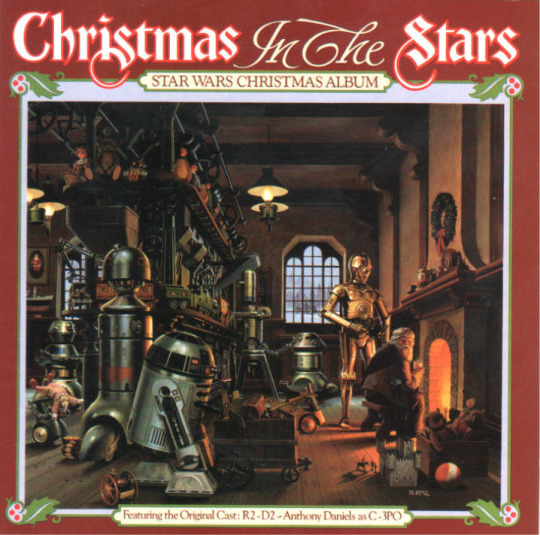
“Christmas in the Stars” (from the “Star Wars” Christmas album of the same name) (1980)
Strange and frightening things began to happen after the tremendous success of the original “Star Wars,” including an astoundingly awful 1978 holiday special. Lessons weren’t learned and two years later producer Meco — hot off his successful disco version of the “Star Wars” theme — produced a Christmas album from a galaxy far, far away. “Christmas in the Stars” is so bad as to become campy fun.

“There Ain’t No Sanity Clause” — The Damned (1980)
English punk band The Damned released this song just in time for the holiday season, but it failed to chart perhaps because no one wanted to have the Santa Claus bubble popped for the youngest yuletide revelers. The lyrics are barely intelligible, but, it is the sing-a-long anthem-like chorus that brings this one home.

"Bollocks To Christmas" — The Business (1981)
English punk bands must have had it out for Christmas in the early ’80s. Elton John's 1973 holiday classic "Step Into Christmas" gets rewritten and reworked into rollicking anti-Christmas anthem that is a welcome antidote for those overdosing on Christmas cheer.
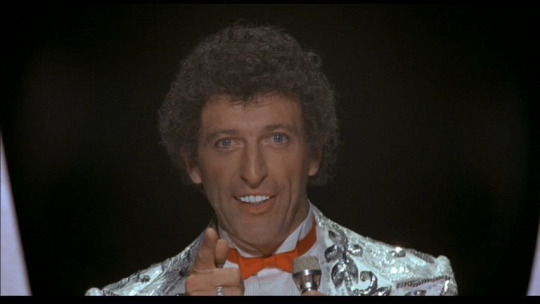
“Christmas in Heaven” — Monty Python (1983)
Monty Python were always known for loopy songs that often pointed out the hypocrisies or the idiosyncrasies of society. In the film “The Meaning of Life,” Graham Chapman sings a caustic song about the consumerism and commercialism that runs rampant during the holiday season that includes lyrics like: “There’s great films on TV/"The Sound of Music” twice an hour/And ‘Jaws’ one, two, and three.“

"Christmas at Ground Zero” - “Weird Al” Yankovic (1986)
Weird Al’s song parodies are usually goofy and innocuous, but Al also has a macabre and twisted sense of humor that occasionally shines through. Written in 1986, “Christmas at Ground Zero” is a biting satire on Cold War paranoia filtered through the sound of a festive holiday tune. Are lines like: “It’s Christmas at ground zero/There’s panic in the crowd/We can dodge debris while we trim the tree/Underneath the mushroom cloud” riotously funny, or simply in bad taste? You be the judge.

“Christmas In Hollis” — Run DMC (1987)
This is a happy hip hop holiday song about Christmas in Queens, N.Y. The song includes such endearingly goofy lyrics as “It was December 24th on Hollis Ave in the dark/When I seen a man chilling with his dog in the park/I approached very slowly with my heart full of fear/Looked at his dog, oh my God, an ill reindeer.”
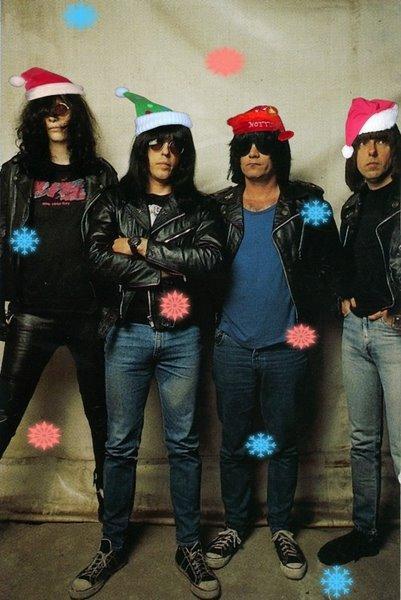
“Merry Christmas (I Don’t Want to Fight Tonight)” — The Ramones (1989)
The Ramones were still kicking around in the late 1980s cranking out three-chord ditties. Surprisingly, one of the best songs from this era is a Christmas song about the tensions of the season and the need for forgiveness.

“Santa Song” — Adam Sandler (1993)
Everyone is familiar with Sandler’s “Chanukah Song,” but he actually did a Christmas themed song that pre-dates its by a year. In this one Sandler sings about all the reasons he won’t be getting a visit from Santa. Best line: “Santa don’t like bad boys…especially Jewish ones.”

“12 Days of Yaksmas” — Ren and Stimpy (1993)
There have been numerous parodies of the “12 Days of Christmas,” which is your favorite really comes down to personal preference. As a youth in the 1990s, I’ll always have a special place in my heart for the warped antics of this dog and cat team.

“Burger/Christmas Medley” — Phil Hartman and Sinbad (1995)
Hidden in the closing credits of the film “Houseguest,” a largely forgettable comedy that lives on as cable TV filler, this is an amusing medley of barbecue-themed Christmas songs. Hartman even reprises some of his most famous “Saturday Night Live” impressions, including Frank Sinatra and Bill Clinton.

“Little Drum Machine Boy” — Beck (1996)
“The Little Drummer Boy” gets morphed into an odd dance and rap flavored Chanukah anthem featuring “the holiday Chanukah robot of funk.” Beck is a chameleon-like musician who blends different genres with amazing skill. It is hardly traditional, but certainly original and memorable.

“The Night Santa Went Crazy” — Weird Al Yankovic (1996)
Don’t be fooled by the sweet guitar strumming of the open, this Christmas carol turns humorously sour fast. Yankovic turns his twisted mind on Christmas in the story of the night Santa finally snapped and became a “big, fat, disgruntled yuletide Rambo.”

“I Won’t Be Home for Christmas” — Blink 182 (1997)
Goofball pop/punk rockers wrote this anthem for all those who are driven up the wall by the holiday season. The song features bitter, but funny lyrics like: “It’s time to be nice to the people you can’t stand all year/I’m growing tired of all this Christmas cheer.”

“I Want an Alien for Christmas” — Fountains of Wayne (1997)
Years before Fountains of Wayne recorded its breakup out “Stacy’s Mom,” the band recorded this cheerfully loopy song that seems to be a modern riff on “I Want a Hippopotamus for Christmas.” It is hard not to smile at such lyrics as “I want a little green guy/About three feet high/With seventeen eyes.”

“O Holy Night” — Eric Cartman (1999)
“South Park” dedicated a whole episode to satirizing holiday music back in 1999. This is one of the tamer songs from the episode with the spoiled Cartman butchering the holiday classic to hilarious effect.

“Lonely Christmas Eve” - Ben Folds (2000)
Faith Hill’s “Where Are You, Christmas?” got all the attention, but this song is probably the best thing to come out of Ron Howard’s bloated film version of “How the Grinch Stole Christmas.” Written from the perspective of the Grinch, the tongue-in-cheek piano-man perfectly captures the Dr Seuss tone in a way the movie it appeared in never did while also adding his own quirky sense of humor.

“Bizarre Christmas Incident” — Ben Folds (2002)
Folds hasn’t done a Christmas album, but based on this and the above song, it would be one of the funniest ones ever recorded. This aptly named song unfolds a dark tale of a man encountering Santa in the night. The song answer the question of what would happen if Santa got stuck in the chimney. Needless to say, it doesn’t end pretty. Best enjoyed by those who like their humor black.

“Jingle Bells” - Brian Setzer Orchestra (2002) Setzer reinterprets “Jingle Bells” with his familiar swinging rockabilly stamp. It is a hoot to hear him change the “one horse open sleigh” to a “57 Chevrolet.”

“Elf’s Lament” — Barenaked Ladies (2004)
On “Barenaked for the Holidays” the Ladies presented a collection of Christmas favorite as well as original songs featuring their quirky sense of humor. On this song an elf complains “I make toys, but I’ve got aspirations.” Bonus: this song features vocals from Michael Bublé.
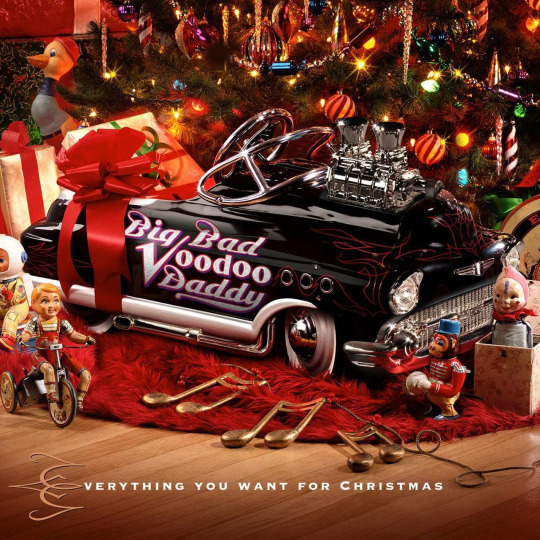
“Mr. Heat Miser” — Big Bad Voodoo Daddy (2004)
The song first appeared in the 1974 stop-motion animation special “The Year Without Santa.” Thirty years later the swing revival group Big Bad Voodoo Daddy recorded the definitive version of the song for their holiday album “Everything You Want for Christmas.”
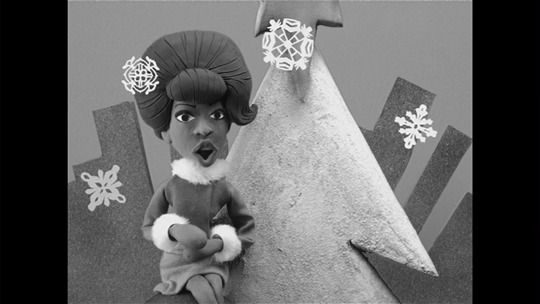
“Christmastime for the Jews” — Darlene Love (2005)
Robert Smigel contributed a series of animated shorts to “Saturday Night Live” called “TV Funhouse.” This was one of the best with soul singer Love providing the vocals to a song that describes what Jews do while gentiles “stay at home and party with their goyish family.”
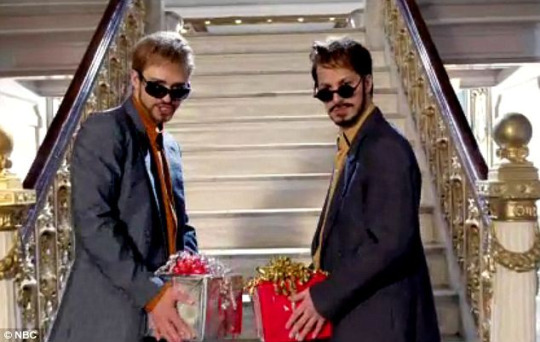
“Dick in a Box” - Lonely Island and Justin Timberlake (2006)
When it first aired on “Saturday Night Live” Dec. 16, 2006, it was clear it would become an instant classic. A parody of ‘90s R&B was an ideal fit for Timberlake, but when you got to the punchline, it was the last thing you expected.

“I’m Getting Nuttin’ for Christmas” — Relient K (2007)
Christian punk/pop band Relient K’s do a fast, rocking cover of the novelty song “I’m Getting Nuttin’ for Christmas.” The snarling punk attitude and crunching guitars suit lyrics like “I broke my bat on Johnny’s head/Somebody snitched on me” quite well.
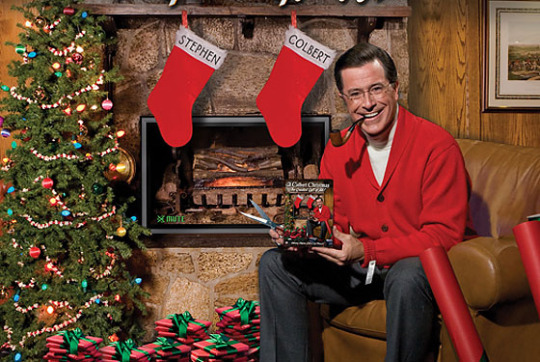
“Another Christmas Song” — Stephen Colbert (2008)
Stephen Colbert did a hilarious parody of holiday specials in 2008. The special’s songs either subverted preexisting songs or, in this case, are something completely new. Lyrics like “The tree is frozen, the winter’s bright/Who’d have thought the wise men look so white” are made all the funnier by Colbert’s authentic crooning.

“Present Face” — Garfunkel and Oates (2008)
This female comedy-folk duo combines disarming charming and simple hooks with goofy and/or raunchy lyrics. In this case the duo leans toward the silly side as they sing about the all too familiar face people make when they get a present they don’t like.

“Christmas Tree” — Lady Gaga featuring Space Cowboy (2008)
Leave it to Lady Gaga, the reigning pop queen of weirdness, to co-write a Christmas song filled with dance beats and dripping with sexual innuendos. It is most definitely not family friendly, but the audacity is admirable.

“Merry Something to You” — Devo (2009)
Yep, Devo, those quirky new wavers recorded a song for the holidays. Blending cheery, generic holiday music with the synthesizers and drum beats they are known for, the band creates an infectious little ditty. Devo often used their songs to satirize society and that’s most definitely the case here as they proclaim: “Believe what you want nothing’s really true.”

“Oh Shit, It’s Christmastime!” — Mad Tea Party (2009)
This uke-abilly band vents their frustration for Christmas in this infectious two-minute ditty. The cynical lyrics include sentiments that anyone can relate to, if only fleetingly: “It’s Christmas, forgot about the pagans and Jews/It’s Christmas and it makes me blue.”

“Christmas Night of the Living Dead” — MxPx (2009)
It was perhaps inevitable that there would be a zombie-themed Christmas song. Punk rockers MxPx present this bloody tale of Christmas carnage featuring the chorus: “Christmas night of the living dead/My face is green and the snow is red.”

“I Wish It Was Christmas Today” — Julian Casablancas (2009)
Originally a goofy tune performed on “Saturday Night Live” by Horatio Sanz, Jimmy Fallon, Chris Kattan and Tracy Morgan, Casablancas, the lead singer of The Strokes, fleshes it out into a full-fledged rocking Christmas song. The added production value manages to enhance the simple charms of the skit rather than undermine it.

“All I Need Is Love” — CeeLo Green Feat. The Muppets (2012)
The Muppet’s classic “Mahna Mahna” becomes the spine for this joyous collaboration with CeeLo Green, in which Green proclaims all he needs is love for Christmas. Slick modern pop production combined with the silliness of the Muppets make this hard to resist.

"The Season's Upon Us" — Dropkick Murphys (2012)
Boston’s beloved Celtic punk band offers up their take on the holiday season. The song gleefully embraces familial dysfunction and chaos with such lyrics like “My sisters are wack jobs, I wish I had none/Their husbands are losers and so are their sons.”

“I Fucking Love Christmas” — Rob Scallon and Doug Walker (2014)
Doug Walker has been providing irreverent movie reviews on the Internet as the Nostalgic Critic since 2007. He loves Christmas. He really loves Christmas, which he makes abundantly clear in this gloriously over-the-top song. The hilariously explicit lyrics definitely require parental discretion.

“Sump’n Claus” — Kenan Thompson (2014)
“Saturday Night Live” delivers again with yet another hilarious satire of Christmas. Here Kenan Thompson plays Sump’n Claus, who, unlike Santa Claus and his judgmental list, declares “everybody’s gettin’ sump’n” and that something is cold hard cash in a white envelope. Just don’t ask where it came from.

“Text Me Merry Christmas” — Straight No Chaser and Kristen Bell (2014)
A cappella group Straight No Chaser is joined by actress Bell for a perfect mix of sincerity and satire in looking at love and the holiday season in the modern age. Playful lyrics like “I don’t care if you spell things right/I just want to hear from you tonight/Stroke those keys with your delicate touch/And type those little words that mean so much” are delivered with a charming sweetness.

“Santa’s Coming For Us” — Sia (2017)
Every year, a new crop of artists release Christmas-themed albums. Typically, they are filled with covers of the same holiday standards with a couple originals thrown. Refreshingly, Sia’s “Everyday is Christmas” features all new songs that perfectly blend Sia’s idiosyncratic pop sensibilities with the upbeat sounds of the season. Lead single “Santa’s Coming For Us” is effervescent and catchy in way that never becomes insufferable.
#text me merry christmas#straight no chaser#doug walker#the nostalgia critic#I Wish It was Christmas today#Saturday Night Live#MxPx#Devo#Christmas Tree#lady gaga#garfunkel and oates#Christmas#Merry Christmas#the barenaked ladies#michael buble#Ben Folds#Weird Al#William Shatner#Kristen Bell#Blink 182#julian casablancas#santa claus#Father Christmas#Justin Timberlake#lonely island#The Kinks#Beck#run dmc#Sia#kenan thompson
1 note
·
View note
Photo
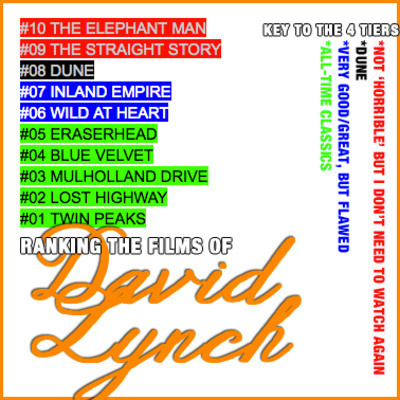
I am going to post this text which I used to make this 90-minute podcast where I ranked all of David Lynch's films. It’s close to 5,000 words long. Since I took the time to write all this out, I wanted to post it, edited for the page. Enjoy:
David Lynch has created ten feature films in forty years, specifically between 1977 and 2017. I am going to rank all ten films right now.
I’ve broken down the Lynch filmography into four tiers.
Tier #4 consists of two films that, while they’re not necessarily horrible, I’d be OK with never re-watching again.
Tier #3 is Dune, just… Dune… (crickets)
Tier #2 also consists of two movies, two features that are close to being really great, but are ultimately flawed for very different reasons.
And then there’s the Final Tier, Tear #1, ALL-TIME CLASSICS, of which, by my count, there are five. Not bad, considering that equals, oh I don't know... half of his filmography.
You might be wondering what constitutes an ALL-TIME CLASSIC... great question. In my book, it’s a movie that scores a 9.500 or higher on my highly scientific to-the-thousandths scale movie review scoring system. All ten of these feature films have been scored between 5.999 and 9.819. Using the thousandths scale allows for accessible gaps as I slowly fill in the list as I continue to compile my personal ranking of the greatest films ever made (and also... the not so great). I urge you to go to my website www.movies.myameri.ca to see the list of over 200 films that I've reviewed and ranked thus far.
Now, let’s get to the list...
#10
Perhaps, The Elephant Man––David Lynch’s second film, from 1980––doesn’t work for me because you can feel, in a sense, that he’s selling his soul. Sure, it's "good" and was recognized as such in all the ways and by all the metrics that the most mainstream critical pipelines assess and award art that is "good."
It's what I couldn't put my finger on at the time I recorded my initial review, and the truly repulsive thing about it: It's bad in the way these "good" films often are. It feels older than it is: a 1980 film about the 1920s that feels like it was made in the late 50s. It’s stylistic feel is both confusing and confused. The brief intrusions of Lynchian originality are present and welcome, but they’re all too quickly dispersed by stale set pieces, and performances that are either overwrought or stiffly boring. Only Freddie Jones, in the devious role of the elephant man’s original "handler," strikes a cord.
The look and feel of John Hurt’s titular character is effective, because it is grotesque. It is in no way fantastical, even if we’re looking at the height of movie magic, because this person existed. And through this realism, a sickening is induced. With every one of Hurt’s nasally slurps––while that’s surely the point, and it wholly succeeds on that level––the film becomes less re-watchable, a major tenant of my grading scale. Wherein Eraserhead’s baby is pure fantasy––a goofy, disgusting, horrifying little buddy that the viewer wants to spend time with––the Elephant Man is an abomination. Our horror with him, at him, over him, is both the movie proving its thesis, and shutting itself down.
David Lynch is on record as having been pleased with the film, but what amount of that pleasure has been framed by four decades of opportunity in large part because of its success, isn’t clear.
The Elephant Man was nominated for eight Academy Awards. No other David Lynch feature was nominated for more than one. It is his worst film by a wide margin.
#9
It would be easy to dismiss 1999’s The Straight Story as a joke disguised. Here was David Lynch making a relatively, well, "straight" movie about a man named Alvin Straight and it was titled The Straight Story. It was released by Disney. When I rewatched this recently I imagined what the movie might have been like if it had the same plot but, you know, felt Lynchian. What it would be like if the entire film had the tone of my favorite scene, the "I LOVE DEER" scene... but, alas, it isn't that.
The film is just a feel-good story. Sometimes, when you peel back the layers, there's just more goodness hiding underneath, and nothing more. And maybe there's a kind of horror in that as well.
#8
Dune stands alone.
Released in 1984, it's the only film among the ten wherein Lynch didn't have complete final cut. It's, by any classic metric, a bad film. At the end of the documentary Jodorowsky's Dune, which details one of the first attempts at bringing the best selling science fiction book of all-time to the big screen, Alejandro Jodorowsky describes going to see Lynch's version and being filled with a perverse glee that the movie was a failure, that it sucked. And it is definitely a failure.
The film is a god-awful mess. Do not under any circumstances attempt to watch the 3-hour "extended cut" version. Lynch had nothing to do with this and it does not re-insert anything by way of noteworthy lost footage. It merely accentuates the worst elements of the original theatrical cut. The biggest crime by far being... the dreaded voice-over, which plagues both versions.
In 2011, a YouTuber posted a 9-minute super-cut compiling all of these whispered voice-overs, which––if you aren't familiar––are meant to give more clarity to the story by presenting the audience an inside look at "the thoughts" in various characters' heads. But these "thoughts" do exactly the opposite: bogging down the story and actually making it harder to follow (in my opinion).
But even with all of its many, many flaws, the film is not without its charm. The look of it is extremely interesting, if not inconsistent. Some imagery looks dated, while other effects seem ahead of their time. The soundtrack, an amalgamation of Toto's overblown rock aesthetics and a nuanced main theme co-written by Brian Eno, is kind of awesome
But really Dune is just a huge mess of ideas. For example, in one scene the actor Freddie Jones is given a cat with a rat taped to its side, hooked to a contraption, and is told to "milk the cat" if he wants to stay alive. His character is never seen or mentioned again. These are the ideas of Frank Herbert told through the lens of David Lynch and filtered by producers who were so damn concerned whether or not the plot would make sense that they butchered the whole damn thing. What's left are pieces, intriguing pieces strewn about the 2-plus hours.
It would be easy to submit this film as the last place entry, #10 out of 10. But I just can't do that. I would re-watch this under the right circumstances. The strange convergence of wild visuals, bad editing and too-fast, too-big, too-soon nature of the production, puts this in a special category among the Lynch filmography. It almost hits "so bad it's good" notes, in a way. When Denis Villeneuve unleashes his high stakes, huge expectations version of Dune in 2020, David Lynch's third film will likely become nothing more than a footnote.... a grain of sand among the great DUNES of film history, one might say. (Sorry.)
#7
Inland Empire is, technically speaking, the final film of David Lynch's career. Released almost thirteen years ago in 2006, it's certainly the most confounding. Three hours of lo-fi footage, welded together by a director whose contempt for the industry he was a part of had reached a boiling point. And that boiling point is INLAND EMPIRE.
For years, I attempted to watch this film in stops and starts. That, for quite a long time, I never got past the relatively straight, narrative-driven first hour is probably telling. Outside of a classic Grace Zabriskie appearance as Laura Dern's crazy Polish neighbor, not much really happens.
But it isn't so much that nothing is happening that's the issue. It's that nothing interesting is happening. An actress gets a role. Her co-star is a womanizer. Her husband might be jealous. There's some mystery concerning the development of the project. They have an affair. After a burst of imagery at the start, this all unfolds in a fairly normal fashion. The most noteworthy thing about it is how it looks. Lynch used a digital camera to film some ideas with Laura Dern one day and then decided to make a feature film out of it. He's stated that he had to keep using the same camera out of necessity. That he had to make it look this way, is a very Lynchian answer to the question "Why does INLAND EMPIRE look like garbage?" Because it does truly look like trash. You can get better video fidelity from any cheap Android phone nowadays. It has not aged well.
Some might point to this and say that's exactly why it's genius, why it's underrated... but I ain't buying that line of thinking, either. It's a misstep, in my opinion. The film is a bloated experimentation of a script written on the fly. It has only one true saving grace... Laura Dern.
Even if they hadn't reunited for the successful collaboration that was Twin Peaks: The Return, I think I'd be OK with this being the pair's final work together. The film only works because of Dern. The entire thing is a testament to her ability and it transcends the hardware that was used to capture it. When I finally got around to completing this watch, I was struck by how weird it got. Which is saying something about a David Lynch film! Without Dern this might play like someone's forgotten student project of the mid 2000s. With her, it's a strange bookend to an amazing career.
One that I have no other choice but to start, and stop, and start again. Someday.
#6
Wild at Heart was produced at the height of David Lynch's success in 1990. Riding the high of Blue Velvet, arguably his most beloved work in a critical sense, even to this day, and filmed just as the world was experiencing TV’s Twin Peaks. Lynch's fifth movie arrived just as the concept of "Lynchian" was soaking into the cultural landscape. It's a brash, outrageous film that feels like the work of an individual who could no wrong. This cockiness both makes it fun, and provides its flaws.
While there seems to be "a point," however cloudy and/or veiled and/or vague, behind most things in every David Lynch film, Wild at Heart seemingly indulges in bombast for the sake of bombast. It's no surprise this Louis CK's favorite film and the film that nearly gave Roger Ebert a heart attack. (See this video)
I'd like to split the difference between those two sentiments, if I may. I don't agree that Lynch is always trying to "get off the hook" as Roger Ebert put it. But that may be the case with Wild at Heart. That it is the only Lynch film to take the top prize at Cannes, perhaps speaks more to the idea of Lynch and his influence in the culture at the time, then it does to the film itself. CK was right to read this film as a comedy, it's the only way it works. And Ebert was wrong to crucify it for being such. But It stands outside the top tier of Lynch's career for a different reason. With cockiness comes laziness. Lynch notoriously had his hands full during the development of this project, as he abandoned the TV world of Twin Peaks to make it. Wild at Heart feels half-baked as a result.
Sure, it has its moments. Willem DaFoe gets to hang his hat on the mantle of notable, completely over-the-top supporting characters in the Dennis Hopper / Frank Booth tradition. And Nicolas Cage and Diane Ladd are every bit as crazed in their performances as well. And yet, therein lies another problem: the movie has only one speed, out of control. The Sailor-Lula love story is meant to provide the downbeat, something earnest in a sea of chaos. But it falls short. You can't stop to smell the roses if the car never stops.
#5
That half of David Lynch's filmography constitute all time classics is no minor accomplishment. I imagine there are only a handful of directors with a better batting average. And so, the order of these next five films is fairly insignificant. Certainly there are biases at play which have placed them into the positions you find them here. For example, I certainly haven't watched Eraserhead enough and I've probably seen Mulholland Drive too many times by comparison. It's also about timing. Maybe This Moment™ in My Life™ is more fitting for Lost Highway then it is Blue Velvet, for myriad reasons, and so on and so on.
The thing to know is this... These five projects have all stood the test of time, and any one of them is deserved of the top spot. Now, back to the countdown...
Eraserhead was exactly like I thought it would be.
I neglected to watch this film for a very long time. I kept telling myself "Now is the right time to watch Eraserhead, Jeff." What I didn't realize until I finally watched it is that the answer to that question is both never and always.
Eraserhead is a feat of nature. A film that took years to complete feels and flows like it was molded together over a single month. It almost feels silly to expound on the film at this point. It's been dissected to death. Even critics who fail to understand it can appreciate it on the most basic of levels. This. Is. Art. PERIOD. There's no denying that.
Wherein the surrealists who decided to make films couldn't get past the concept of the singular idea, confining their work to shorts OR a series of loosely connected "living paintings," Lynch was able to extrapolate the aesthetic to feature length and also tell a story.
It's soundscape alone is a work of art, and perhaps the most important facet of the film from a historic point of view. This world sounds exactly as it looks: manufactured, fractured, jarring and glum. What brief respite the Lady in the Radiator provides with her haunting, off-kilter serenade is all we get by way of counterpoint to the unnerving soundtrack of Lynch's debut feature. It took Lynch, working in tandem with master sound engineer Alan Splet, nearly a year to complete. From the 1991 book, Midnight Movies:
"The soundtrack is densely layered, including as many as fifteen different sounds played simultaneously using multiple reels. Sounds were created in a variety of ways—for a scene in which a bed slowly dissolves into a pool of liquid, Lynch and Splet inserted a microphone inside a plastic bottle, floated it in a bathtub, and recorded the sound of air blown through the bottle. After being recorded, sounds were further augmented by alterations to their pitch, reverb and frequency."
Lynch's first film is also his shortest, just shy of ninety minutes, and it's hard to find any flaws. Is the detour with the severed head at the pencil factory meaningless? How about the next-door neighbor character... unnecessary? Inside the Top 5, I won't be nitpicking just to do so. In the Top 5, everything is fine.
#4
While I don't necessarily think Blue Velvet is the best film of David Lynch's career, it's hard to argue that it isn't the most important. It is the world from which all subsequent Lynch things are built. Following the creative and commercial disaster of Dune, Lynch's fourth feature is a dark psychological horror that both expands upon and completely blows apart the aesthetic of Film Noir. And there really isn't a single David Lynch film project after Blue Velvet which doesn't also explore this form to a degree.
The movie marks the debut of a pair who would turn out to be lifelong collaborators in the David Lynch cinematic universe: Laura Dern, acting here in one of her first "adult" roles at age 19, and the composer Angelo Badalamenti. Badalamenti would go onto write the scores for every subsequent entry in the filmography except Inland Empire, and his main theme to Blue Velvet remains one of the most memorable.
Blue Velvet is also notable as being a vehicle for Dennis Hopper's re-entry into mainstream cinema. Relaunching his career, Hopper's portrayal of the deranged Frank Booth remains as skin crawling as ever.
I think the fact that I have watched Blue Velvet and Mulholland Drive more than any other of Lynch's films had a lot to do with where I've placed them on this list (that they aren’t higher). But I swear I'm not being contrarian for contrarian's sake. As I said a minute ago, all five of these films are worthy. When it comes to the movies of David Lynch, well, I guess you could say, "....HE PUT HIS DISEASE IN ME." (Sorry.)
#3
The strange origin story of Mulholland Drive somehow eluded me for years. I only found out that this movie, Lynch's ninth, released one month after 9/11, was literally developed and shot with the intention to be a TV pilot for ABC. I found this out from the book, Room to Dream, by the way. The half autobiography/half biography of Lynch's life, which came out last year that I highly recommend. Only when it was clear that it wouldn't work for television did Lynch decide to re-cut and film additional footage to release as a feature. Though this was common knowledge, I managed to watch this many times over the years with no idea. When I rewatched it again recently with this information, I couldn't help but try to pick out what was filmed when in the timeline, and if I could see any inconsistencies... a true hellish way to watch a picture. I don't recommend it. But I digress..
From Blue Velvet on, each one of David Lynch's films (outside of The Straight Story) has had a longer running time. At close to 2½ hours, 2001's Mulholland Drive was his longest to date by a decent margin. It’s something of a misnomer that Lynch's films meander, as people mistake deliberateness for slowness or frivolity. Mulholland is filled with detours, inhabiting the film like micro movies in their own right. This also continues the loose Los Angeles trilogy (after Lost Highway and concluding with Inland Empire), which, at their heart, are films about coming to grips with who you really are. This might be the most direct lampooning of the film industry itself, but all three deal with being someone who you're really not.
Lynch has repeatedly stated his admiration for the 1950 film noir classic Sunset Blvd., another film about the film industry. In some respects, the naïveté of Naomi Watts' Betty is the counterpoint to Norma Desmond. In Mulholland Drive, her character says, "I'd rather be known as a great actress than a movie star. But, you know, sometimes people end up being both." Whereas, Norma Desmond portrayed by Gloria Swanson, has already reckoned with the true fate: "No one ever leaves a star. That's what makes one a star."
The arc of the characters—plural—Betty and Diane, and the power of Naomi Watts' performance as them both, is behind the wheel on Mulholland Drive. I found it odd that she took second billing in the opening credit crawl to co-star Justin Theroux. Was this because she was unknown to the masses at the time, or perhaps another piece of the puzzle to this movie's greater themes?
Mulholland Drive touches all the bases. At times bleak and bizarre. Sometimes bright and hopeful. In many ways, it's modeled after the next film on our countdown, as it can almost be read as two separate entities: converging, crossing and meeting together again? Well...
#2
No film surprised me more during my recent rewatch binge then 1997’s Lost Highway. David Lynch’s seventh film might be his most divisive, in so much as it failed to ignite the critical response that really any of his other films did upon their release.
While it’s industrial rock heavy soundtrack perhaps dates the film to its actual era of production more than any other Lynch picture, it also works as an anchor. Outside of Inland Empire, this is easily his most abstract and seemingly rambling work. It is grounded through style and feel. And it might just be his best singular statement.
Bull Pullman is a revelation as the jazz saxophonist Fred Madison. His chaotic emoting on the stage through his blaring instrument is but another counterpoint, this time to his subdued, confused off-stage demeanor. Who knew the goofy President from Independence Day could pull this off?
My critique of Patricia Arquette in many of her other roles is that she comes across as lifeless. Well, with her performance here as a dead-on-the-inside beauty, that mode has never played better. She's tremendous, acting the conduit in this strange play, this circuitous journey that is often described as a theatrical möbius strip, where our leading man has quite literally been replaced.
And that brings up another interesting point: There doesn't seem to be a traditional main character in this film. Arquette in her dual role as Renee and Alice is functionally it, but she gives way to Pullman and Balthazar Getty's Pullman––a car mechanic named Pete––for long stretches, and its Lynch's most diplomatic film in terms of dolling out the heavy lifting in this regard.
And last but not least we have to talk about... Robert Blake.
In a sea of outstanding, intensely weird and occasionally unforgettable supporting characters throughout the Lynch filmography, Blake’s Mystery Man might just take the cake. That Robert Blake, more than likely an actual sociopath, instructed Lynch on his character’s look––which, let me remind you was such: Blake decided to cut his hair cut extremely short, parted in the middle, white Kabuki make-up on his face, and an all black outfit––might be the best example of the auteur trusting his instincts, and having it pay off completely. Only on screen for a handful of scenes, Blake, who would be arrested and acquitted for the murder of his wife just a couple years later, delivers a truly unsettling performance. In his final film role ever, he encompasses true evil more than Twin Peaks’ BOB or Frank Booth in Blue Velvet. The Mystery Man is the lurking, vile corruption of what’s good that Lynch has always been looking for.
But Lost Highway is not a “what’s beneath the surface” film like Blue Velvet or Twin Peaks or even Mulholland Drive are. The “point” of Lost Highway might just be that evil exists in plain view... and there’s nothing we can do about it. Gary Busey sometimes has to watch his only child disappear in a lightning bolt of spoiled meat and that’s that. When they reappear, broken and struggling, and falling down the same path until it happens again, well... that’s just life.
One of my favorite parts of the entire movie is a scene early on when a detective asks Fred Madison if he owns a videocamera. His wife, Renee Madison, portrayed by Patricia Arquette, responds, "no, Fred hates them." Fred responds, "I like to remember things my own way." The detective asks, "what do you mean by that?" Bill Pullman, as Fred Madison, replies, "how I remember them. Not exactly the way that they happened."
#1
(DISCLAIMER: I’m sorry if you think it’s cheating that I am including the expanded Twin Peaks Universe as one single entry on this list. I’m sorry if you think the only thing that should count is Twin Peaks: Fire Walk with Me because that is the only Twin Peaks thing that is actually a “feature film.” But also: SORRY NOT SORRY.
This is my list and I’m putting Twin Peaks at #1, specifically: all of Season 1 of the original TV show, plus the beginning of Season 2 (until the episode where we find out who killed Laura Palmer) and the Season 2 finale. Then of course Fire Walk with Me, and the 18 hour MOVIE that is Twin Peaks: The Return, or Twin Peaks Season 3, if you will (I prefer the former as it gives the masterpiece the gravitas it deserves).
If you put a gun to my head and I ABSOLUTELY had to only include Fire Walk with Me, I would probably drop it to #4 or #5 and slide everything else on the list up a spot. End of DISCLAIMER.)
I was given the Twin Peaks Gold Box as a Christmas gift in 2007. The 10-DVD set had just come out and this was still an era when people treasured physical things like that. It was really important and meaningful to me, and I still own it despite no longer having a DVD player. Watching it for the first time was a treasure and a fond memory. The feeling I got when I heard that Badalamenti theme music start the show and everything in between...
...yes, even James in Season 2. I loved it all: the good, the bad and the ugly, the whole kitten caboodle. The original TV series is, obviously, far from flawless. Lynch stepped away for long stretches before going fully AWOL after it was revealed that Laura Palmer's father, portrayed by the great Ray Wise, is in fact her killer. After that, the show took a turn (to put it lightly).
But Lynch never gave up on the world. He returned to helm the stunning Season 2/de facto series finale. So much of the mythology that Fire Walk with Me and certainly The Return is built upon is ignited in that finale, fittingly titled "Beyond Life and Death." But really, the original series is most notable for merely existing at all. A precursor to the "golden age of television" that was right around the corner, there still hasn't been a network series remotely this daring. There's often much made, too much if you ask me, about the "cult of David Lynch." Critics of this “cult” say its followers are blind: The man can do no wrong. It's weird for weirdness' sake. And so on, they drone. Now, I'm a fairly big David Lynch fan (no duh). But I've always tried to remain grounded in regards to this. He's not perfect. But he has made near-perfect art. And I'm a fan of ART first. A practicer of admiration? Maybe some distant second, third, fourth or beyond. I see his infiltration of the masses with Twin Peaks as one of his finest achievements in the arts. How many powerful people had to be convinced that the mainstream was ready for something like this. It's baffling. That, of course, they weren't ready is kind of besides the point. Someone has to poke the bear.
If Lynch had closed the books on Twin Peaks with Fire Walk with Me, his sixth film released in 1992, that would have been fine. It's a polarizing feature and was a fairly significant box office bomb, even for Lynch. Fire Walk with Me nonetheless retains an otherworldliness among the filmography. Given the subject matter––you know, just your average super-violent father-daughter incest rape thing––it's hard to argue this isn't his darkest tale by a wide degree. It's perhaps not ripe for repeated viewings. In fact, I did not rewatch it for this review, the only film of the ten. Why? Well, I had given it a replay back in 2017, just before the debut of Showtime's Twin Peaks: The Return. And, to be honest, I just wasn't ready to return to this madness quite so soon.
Only David Lynch could mold one of the loftier aspects/thematic devices/main characters (?) of the long-awaited follow-up to perhaps his most beloved work on one of the most random, seemingly meaningless, toss-away lines spoken in a bad Cajun accent in a cameo role by David Bowie. "We're not going to talk about Judy at all..." Until, that is, the time is right... Say... 25 years later?
I just recently began to rewatch The Return and I'd like to say thank you for this, David Lynch. This needs to be put into the discussion with his greatest work, if it's not already there. I can recall after various episodes of its original run (May to September 2017), feeling a sense of awe and wonderment and confusion and joy. I say to anyone that's curious that this is an 18-hour movie. David Lynch made an 18-hour movie when it wasn't certain if he'd make any more movies again.
It would be dumb, if not downright foolish, to try and hash out the plot-lines or gush over Kyle MacLachlan's performance in not two, but three distinct roles. Here, the duality of man has fractured yet again in these modern times. And when I got to that final two-hour finale, I found myself on a family vacation. So I carved out a block of time to watch it at the house we were renting on my laptop, alone, in the dark, as the rest of my family enjoyed a sunny day at the beach. I filed Kyle and Laura Dern's Diane into one more sketchy motel and then onto El Paso, Texas, of course, just as everyone had guessed, and then back to Twin Peaks, Washington, where the series ends on a question... Special Agent Dale Cooper turns to Laura Palmer outside her childhood home and asks, "what year is this?" She screams into the abyss and the lights in the home spark off and the screen explodes into darkness. For a series that was, ultimately, about the passing of time as much as it was about the origins of evil in the universe or anything else, it was a fitting end.
0 notes
Text
I saw:
Star Wars- If you don’t know the story you won’t care. Why bother summerizing when you can rant!
Yep, I still call the first film “Star Wars” or “the original Star Wars”. Look, I’m old enough that as a little girl I saw it more than once in it’s original release back in 1977, and it was just called Star Wars then. It was called that for a long time. Wanna see how much history I had with Star Wars before the rebranding?
When I saw my first academy awards (or actually fell asleep a few minutes in...I was little!) hoping to see it win Best Picture. Halloween and me in a Princess Leia costume Mom made me and then R2D2 on my birthday cake. I saw The Empire Strikes Back and The Return of the Jedi at their releases, each at least twice. My family had the 8mm cut down film version, then I worked my ass off one summer to buy the films at rental price, then eventually upgrading to a VHS widescreen set. I’d seen the movies 100 times each before the 20th anniversary, and I know because I counted! The Star Wars Holiday Special (yes, it’s original airing), the fun animated Droids and Ewoks, the so bad I never wanted to see them again Ewok tv movies, tons of making of specials and guest appearances of people from the films. The entire run of the original Marvel comics. I fell asleep to the music on 8track every night and then during the day I’d play my drums and cymbals to the vinyl soundtrack. (My parents were very understanding! LOL) I’d also listen to the “Story of Star Wars”record (flip as the tractor beam pulls them in), that Meco disco album, and upgraded the soundtracks, first to tape and then CD...more than once. I had lightsaber battles so feirce with my brother we had to get new ones to replace the smashed up old ones. My room had several posters and I wore Star Wars tee shirts. I collected tons of action figures, dolls, plushes, model ships, blasters and the like, right up until the figures went on clearance post Jedi (just found an old package yesterday between books). Too much merchandise to count. I wore my Han Solo vest every day one year in high school, purchased through the fan club I’d been a member of since it started. I read every single book or magazine to do with the movie or spun off it I could find. And through all of it back then Star Wars was still the default title of the first film....
So, as you can tell, I had a long history of just knowing it as Star Wars. Childhood. Teen. Young adult. While the “A New Hope” subtitle was added to the crawl in one of the rereleases, it was just Star Wars when anyone talked about it. I can’t remember now exactly when the rebranding got aggressive, with the anniversary in 1997 or the release of the prequels, but for at least 20 years I only ever heard anyone call it Star Wars.
When Lucasfilms started to try to make “A New Hope” a thing I kind of rolled my eyes. No one was confused by the film series for Planet of the Apes, The Thin Man or The Pink Panther sharing a name with their first films, so why bother? Now, I can get that after the subtitle got added to the opening crawl that it would make sense technically to make the titling of the films uniform. But I also knew it didn’t matter. It isn’t like it was a person asking you to use another name. The only people that cared were the more obsessive fans that liked to be smug about knowing the “real” title and George BLOODY Lucas. I rolled my eyes and doubted people would rewrite their memories just to make them happy.
I was wrong.
And so here we are at a time where people mock you if you call it “Star Wars” insteas of “A New Hope” So why do I still defiantly cling to the original title? Because it’s part of the mutilation and rewriting Lucas started doing. I’d been bothered reading interviews when I was a girl where he would contradict himself on the stories behind the stories, going so far as to claim things were “always” intended that reading early drafts showed no mention of. But ok, I knew creation is a process and some people want everyone to think it’s actually just a miraculous whoosh springing out fully formed. And despite the fact I knew full well that other people worked on the films, in the case of Empire and Jedi other directors and writers, I still shrugged it off and gave him the ultimate credit for everything. He was flawed and human, with an ego under that mild exterior, some of what he said was total BS and maybe my brother was right after watching an interview when he said the god of the Star Wars universe had no one anymore to question him...but still I trusted Lucas.
I was wrong.
Never mind the mind blowingly huge problems with the prequels, my disilusioning started right here, with the Special Editions. Most of the changes were pointless but some actually seemed to damage the films. Take my top three grumbles:
1) Tatoonie should NOT be a rosy pink! Before it was bright clear sunlight, unrelenting hot, parching and desolate, unforgiving...now it’s all pretty, colorful and warm. It reduces the sunbaked heat, but more important the dry barren sense of a colorless place Luke would ache to leave.
2) Han’s conversation with Jabba should not be in this film. I know it was filmed originally and cut for technical reasons, I’ve had a bootleg of it since my first convention, but loosing it was a good thing. Jabba should remain a shadowy unseen threat, someone that wants Han’s hide enough it looms over our scoundrel until the third film. The reveal of Jabba gains power in Jedi because you don’t know the extent of his powers but he’s supposed to be scary and we see him up in a position or authority over the room. Here Jabba looses power by not only being on the same level as Han and seeming smaller, but for crying out loud there is the gag of Han stepping on his tail while seeming completely unconcerned! And speaking of people being reduced...Boba Fett is this mysterious bounty hunter not just some damn henchman to Jabba. What part of mysterious don’t they get!
3) Mos Eisley does not need to me so cluttered up with CGI characters! This is a middle of nowhere planet with a scattered population and a climate many people wouldn’t enjoy. Sure it’s a spaceport but with buildings, many of which are at least partly underground as relief from the environment. The streets actually gain a sense of unease by being underpopulated, giving a sense that people (of whatever sort) could be watching from doorways. Like you could be attacked and no one would notice. But nope, now it’s bustling, so full of effects life that they actually wreck the look of shots by having gratitous critters and droids moving to block us seeing our characters.
Yes, I didn’t mention the Greedo thing. It doesn’t bother me as much as the rest, but you all know that if Lucas HAD wanted to film it that way originally it would have been just as easy as what we got.
Still, I wouldn’t be bothered at all if this was just an alternate version. Blade Runner, E.T. and others have given you a choice of which version to watch in DVD sets. I was sure both versions would stay easily available.
I was wrong.
Lucas decided that whatever version was his current take should be the only one out there. The DVDs with the original (close enough) cuts long ago went out of print (and in my case the DVDs failed!) so if you want to see Star Wars not going to look at all like my first 100 times seeing it.
And that’s my problem. Rejiggered versions have become the only version. If out of preference, curiosity or nostalgia you want to see something from before the monkeying around you have to look to illegal means. As far as Lucas is concerned he would like everyone to pretend any prior versions existed. History is rewritten and we aren’t supposed to grumble. All hail the genius of Lucas or some rot and forget anything you saw on screen and anything he said before. And it bugs me because I resent being told to forget
Retitling the movie, not subtitle but what we are supposed to call it, is just a tiny part of the emperor’s dictates. And my refusal to use that name is symbollic. In fact this insignificant gesture is a bit like something....Now what’s the word?
Ah yes.
Rebellion.
LOL
But not to worry. My generation will die off eventually. Those that grew up without special editions, prequels, and so forth will die out. In 100 years everyone will call it “A New Hope” and will not even realize anything was ever changed. But for now some of us still remember another Star Wars.......
One last note: I think the double whammy of the SEs and the prequels did something I thought impossible....I fell out of love with Star Wars. I rarely watch it since I only have the SE and when I do I spend some of the time grumpy at alterations I don’t like and all of it a bit empty. It’s the only time in my life that I’d ever stopped loving anyone or anything. For me usually live cools but the warmth remains to quickly rekindle. When the Force Awakens came out I felt my affection return a bit to the franchise for the first time this century and I thought my love could be reborn. But tonight, rewatching Star Wars, I realized something has been permanently lost. It no longer hurts to watch but the heart has gone out of it for me........
2 notes
·
View notes
Text
words i liked from “Letters of Note”
In which I spent 2 hours compiling my favorite quotes from the books “Letters of Note” - a collection of letters sent from famous, regular, and famous-but-only-in-select-groups people. This is mostly just so I have a place where they’re saved but also because this blog is basically “stuff i like” so. yes. anyway. if you like old things and are interested in people you’ll probably like this.
As long as there is one upright man, as long as there is one compassionate woman, the contagion may spread and the scene is not desolate - E.B. White in response to Mr Nadeau’s letter about the future seaming bleak and hopeless to him (1973). pretty standard stuff really but in context it is better
I must write a special letter and thankyou for the dream in the bottle [...]. Tonight I shall go down to the village and blow it through the bedroom window of some sleeping child and see if it works - Roald Dahl to Amy Corcoran in response to her letter about her love for the book, 'The BFG', and a bottle she sent inside which she put a painting of one of her dreams (1989)
Say howdy to George Carter, and thank him for taking the pistol from you when you were shooting at me - from Jourdan Anderson to Patrick Henry Anderson when the latter asked him to return and become his slave again, trying to tempt him by offering him ‘more freedom’, despite the fact that after Jourdan fled from him he had a much better life and a happier family (1865). Jourdan refused to go back unless a list of his demands were met - they were not.
*The entire letter Hunter S. Thompson sent to Hume Logan in response to the latter's request for some life advice which is too big to put here*
Dear sirs, I see that you are going to make all sorts of excuses to keep my child out of public schools. Dear sirs, will you please to tell me! Is it a disgrace to be born a chinese? Didn't God make us all!! - a rightfully enraged Mary Tape to the San Francisco board of education when they would not let her daughter attend school because of her Chinese descent (1885)
It is only adults who ever feel threatened - Ursula Nordstrom to a school librarian after hearing that the latter banned and later burned Maurice Sendrak's (her client) children's book, “In the Night Kitchen”. (1972)
A motion picture projector is a non humanoid robot which repeats truths we inject into it. Is it inhuman? Yes. Does it project human truths to humanize us more often that not? Yes. The excuse could be made that we should burn all books because some books are dreadful. We should mash all cars because some cars get in accidents because of the people driving them. We should burn down all theaters in the world because some films are trash.. drivel. So it is finally with the robots you say you fear. Why fear something? Why not create with it? - Ray Bradbury to Brian Sibley in response to the latter's letter about his fear of robots (1974)
Not believe in Santa Claus! You might as well not believe in fairies! - from the editor of the Sun to 8 year old Virginia O'Hanlon, in response to her question about Santa Claus being real. It's a nice letter (1897)
Sir, I have just written you a long letter. On reading it over, I have thrown it into the waste paper basket. Hoping this will meet with your approval - a Big Mood presented in a short letter from Alfred d. Wintle to the editor of The Times (1946)
Dear president Eisenhower, my girlfriends and I are writing all the way from Montana. We think it's bad enough to send Elvis Presley in the army, but if you cut his side burns off we will just about die! - in which the President of the US is enrolling Elvis in the army, and three fans are distressed (1958)
*God you should also really read Stewart Sterns letter to the Winslows about James deans death. It’s also a nice letter that’s too big to put here*
Now farewell Susie, and Vinnie sends her love, and mother hers, and I add a kiss, slyly, lest there is somebody there! Don't let them see, will you Susie? - in which Emily Dickinson is yearning for Susan Gilbert, lesbianly. You know that one Sonic meme? Good for them. (1852)
I respectfully remind you sir, that we have been the most patient of all people. When you said we must have self respect, I wondered how we could have self respect and remain patient considering the treatment accorded to us throughout the years. 17 million Negroes cannot do as you suggest and wait for the hearts of men to change - Jackie Robinson to. President Eisenhower in response to his call for patience from the African Americans fighting for civil rights (1958).
NEED SMALL BOAT - a distress call carved into a coconut shell by John F. Kennedy to the allied forces when stranded on the Solomon islands during ww2 (1943)
There are lots of one liners in the book, but when the German army are throwing bloody great lumps of hot iron at you, one only has time for one liners, in fact, the book should really consist of the following: ‘oh fuck’ ‘look out’ ‘christ here's another’ ‘where did that fall?’ ‘my lorrys on fire’ and ‘oh christ the cook is dead' - an amusingly but I suppose rightfully annoyed Spike Mulligan to Stephen Gard in response to the latter's unending questions about his comedy material (1977)
For every human being who looks up at the moon in the nights to come will know that there is some corner of another world that is forever mankind - the presidential speechwriter’s 'just in case' speech in case the moon landing failed (1969)
After I have said all this, I am sure you are still ready to respond, in effect, ''yes, yes... But it still remains our right and our responsibility to decide what books our children are going to be made to read in our community.'' That is surely so. But it is also true that if you exercise that right and responsibility in an ignorant, harsh, un-American manner, then people are entitled to call you bad citizens and fools. Even your own children are entitled to call you that - Kurt Vonnegut’s (relevant-to-this-day) letter to principal Charles McCarthy’s decision to burn the banned books of the area in his school (1973)
Thankyou for your gorgeous and charming letter. You brighten up my dim life. [...] ‘perforation problems’ by the way, means to me also that the holes that will always exist in any story we try to make of our lives. So hang on my love, and grow big and strong and take your hits and keep going - Iggy Pop’s response to Laurence’s 20 fucking page long (her words not mine) fan letter. Also, she got this the day she was being evicted so like. Cool. (1995)
my love for you is deathless - Sullivan Ballou to Sarah Ballou - his wife - during the Civil War as he explained how he might not return home (1861). It's just. it’s nice
Dear ''Dr'' Fields, my response to your letter of February 19, 1976, is: kiss my ass - Bill Baxley to Edward R. Fields - a member of the klu Klux Klan - when the latter told him not to reopen the case of the 16 Street Church Bombing - which was a 'racially motivated act of terrorism that resulted in the deaths of four African American girls' (1976)
How happy shall I be if I can still be helpful to you in my grave. And Also My misfortune is doubly painful to me because I am bound to be misunderstood; for me there can be no relaxation with my fellow men, no refined conversations, no mutual exchange of ideas. I must live almost alone, like one who has been banished. I can mix with specify only as much as true necessity demands. If I approach to people, a hot terror seizes upon me and I fear of being exposed to the danger my condition might be noticed - beethoven to his brothers, on death and his hearing disability (1802). this one just made me incredibly sad really.
During the next few days I shall either put a bullet through my head or commit something more shattering to myself than death. At any rate I shall be quite a different person. I refuse to be cheated out of my deathbed scene - Rebecca west to HG Wells, her ex lover (1913). the last line though
*The entire letter that Jermain Loguen wrote to Sarah Logue (1860). It is also very good but to giant to put here*
I have not a thing to say. Nothing is of more importance than the other. I am flatter than a denial or a pancake; emptier than Judge Parke’s wig when the head is in it; duller than a country stage when the actors are off it; a cipher, an o! I acknowledge life at all, but only by an occasional convulsional cough, and a permanent phlegmatic pain in the chest. I am weary of the world and life is weary of me. My day is gone into twilight and I don't think it worth the expense of candles. My wick hath a thief in it but I can't muster the courage to snuff it. I inhale suffocation - poet Charles lamb to his friend Bernard Barton on the subject of having the flu. Melodramatic goals. (1824)
#HHHHHHHHHHHHHHHHHHHHHHHHHHHHHHHH#letters#letters of note#im pretty sure theres a website that has these letters too so go check it out if you dont have the book tis v good#quotes#save#me#a loooooooooooooooooooonnng post
0 notes
Photo
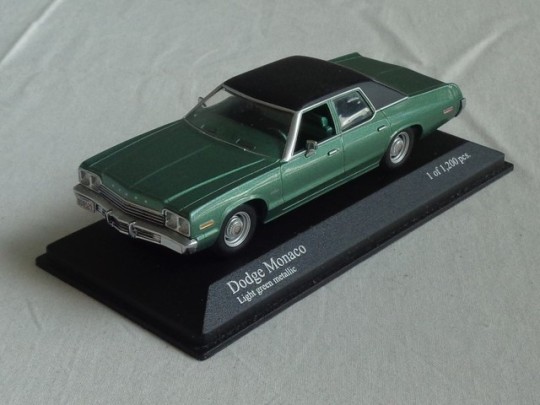

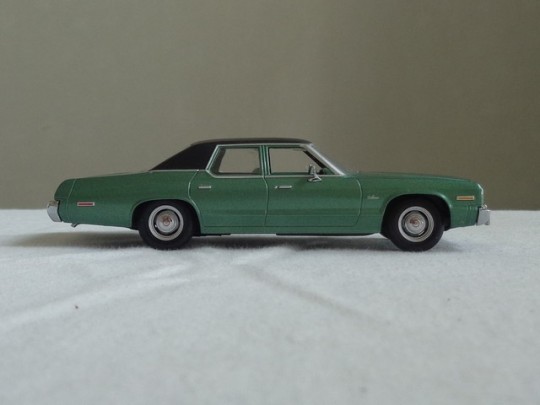

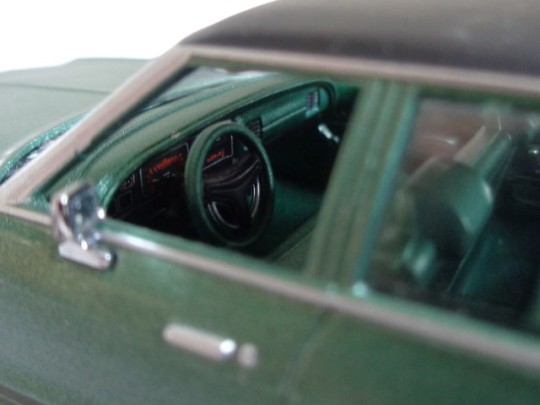

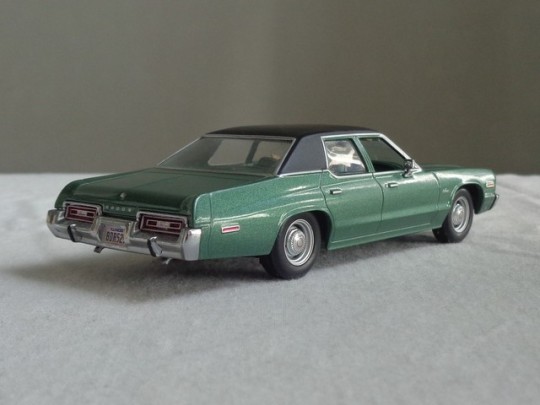

1974 Dodge Monaco (Minichamps 1:43)
The Monaco was originally introduced in 1965 as a ”Limited Edition” of Dodge's full size Custom 880 model, intended to compete with Pontiac's Grand Prix in the personal luxury car segment. But this plan was jettisoned the very next year when the Monaco actually went on to replace the Custom 880 entirely, with the previous ”special” Monaco now being given the upper scale badging of the Monaco 500 in separation from the base model. A major facelift followed in 1967, while a wholly new ”fuselage” style redesign for 1969 came to signify its transitioning to its second generation lineup that lasted until 1973. At this juncture, Chrysler were looking to revamp their full-size model lineup of the Dodge Monaco and Plymouth Fury to their new C-Body configuration, which was to feature all new sheetmetal and a new unibody construction.
Unfortunately, only days after their introduction, the 1973 oil crisis began and suddenly large cars like the Monaco were seen as being wasteful and out-of-touch with the times as people were rather gravitating toward smaller, more economical compacts instead. The media subsequently eviscerated them for their size and uninspired styling, while sales suffered accordingly. However, they did still find great favour as fleet cars, particularly with the police force, and this would not see a change during the entirety of the Monaco's existence. This new third generation Monaco also came to replace the older Polara model that had been in production since 1960, with the Monaco lineup now consisting of three trim levels: basic, Custom, and the upper scale Brougham. Engine options consisted of a 2-barrel 360 cid V8 as standard, a 360 with a 4-barrel carburetor, a 2- or 4-barrel 400 cid plant, or a 4-barrel 440 cid engine. Available body styles consisted of a two-door coupe, a four-door sedan, a 4-door hardtop for this year only, and a station wagon with optional faux-wood side trim.
The Custom and Brougham trims, however, ended up being both eliminated in 1975 and subsequently replaced by the separate Royal Monaco model, easily identifiable through their headlight covers and different grille, while a further ”Diplomat” option was offered on two-door Brougham coupes featuring a landau vinyl roof, an opera window, and a wide steel band to separate the vinyl section from the rest of the roof. On a downside, this was also the year when the catalytic converter was introduced, designed to minimse car emissions in order to adhere to ever tightening emissions regulations, though this also meant the loss of horsepower and fuel economy due to the restrictions in the free flow of exhaust. The C-Body Monaco would countinue in this form until 1976 when it was downsides to the B-Body platform for 1977, though the Royal Monaco still remained in production for 1977 on its old C-Body platform before being discontinued entirely for the following year. This state of affairs, though, would not last long as the Monaco name itself was subsequently discontinued after 1978, with the nameplate only revived for a short time between 1989 and 1992 for the rebadged Eagle Premier.
By all intents and purposes, the 1974-1977 Monaco/Royal Monaco can't really be called a stupendous car on any level, being effectively just a really big, boxy 1970s sedan with not much flair and not much in terms of styling finesse of the 1965-73 models. But it has earned a spot in popular culture nevertleless when a '74 ex-police cruiser was used as the hero car in the cult classic ”The Blues Brothers” where it came to perform increasingly strange and over-the-top stunts to confuddle the army of cops chasing after the hapless musicians on a mission from God. The same film also featured a large amount of other police Monacos and Royal Monacos that were summarily trashed in the multitude of car chases the movie was filled to the brim with. It lent the car a cool factor that quite frankly otherwise isn't there and for that has carved itself into a strange, but endearingly oddball place in many people's hearts... including mine.
Due to the Monaco being so prevalent as a cop car in various movies and TV shows, this has also resulted in there being an influx of scale models being produced of the C-Body Monaco by various different manufacturers, often in connection to one of these movies or shows. But in terms of providing standard versions of the car, only Minichamps thus far has seen fit to also provide regular Monaco variants for purchase. And they certainly have taken full advantage of maximising the use of this model as they have not only provided three colour variants on the base sedan (green with black top, brown with black top, and blue), but have also made a highway patrol, taxi and fire department versions for those preferring the fleet car approach for this big Dodge. Of these versions available, my favourite is the above green variant (official colour name ”Frosty Green”) that combines the black vinyl top with a more attractive colour choice than the alternative vomit brown.
As a minituarised representation of the 1974 Dodge Monaco there is very little to criticise, with Minichamps' usual quality standards making for perhaps the best scale model of this particular car available by anyone in any scale. Only the lack of colour for the grille embedded in the bumper (which I have coloured in myself here) stands as a notable gripe in regards to the model's accuracy. The interiors are all colour keyed with the exterior, which works fine even with the threat of making everything look a bit monotonous in terms of contrast, while the dash gauches are clearly printed on a sticker, though that's hardly atypical of any model to be considered as a complaint of any kind. The bottom of the car is nicely detailed with separate exhaust pipes and coloured oil pan to add that bit of texture, while dimension-wise everything is spot on and the casting is both sharp and well-defined. So, in terms of recommending a '74 Monaco at the 1:43 scale, there is little to detract from the Minichamps offering unless you specifically want a Bluesmobile replica or somesuch, in which case the highly affordable Greenlight model would likely suit you better. For a base Monaco, though, this is really your only bet in town. 5/5
Variant break-downs: Light Green Metallic: 1,200 pieces Gold Metallic: 1,008 pieces Luceme Blue Metallic: 1,680 pieces Taxi: 1,008 pieces Fire Department: 1,008 pieces Highway Patrol: 1,008 pieces
1 note
·
View note
Text
Model COLLAPSES At Kylie Jenner's B-Day Party & Explains Why She Left in a Stretcher
Model COLLAPSES At Kylie Jenner's B-Day Party & Explains Why She Left in a Stretcher
Jeremy Brown - Latest News - My Hollywood News
Model COLLAPSES At Kylie Jenner’s B-Day Party & Explains Why She Left in a Stretcher, Pixar News.
youtube
Watch Latest Celebrity News, Hollywood Celebrities Latest Story 2017, Model COLLAPSES At Kylie Jenner’s B-Day Party & Explains Why She Left in a Stretcher.
List Of 2018 Hollywood Films Celebrity News all Celebrities of Walt Hollywood Animation Studios headquartered at the Walt Hollywood Studios in Burbank, California, is an American animation studio that creates animated feature films, short films, and television specials for The Walt Hollywood Company. Founded on October 16, 1923, it is a division of The Walt Hollywood Studios. The studio has produced 56 feature films, from Snow White and the Seven Dwarfs (1937) to Moana (2016).
How much are the Celebrities on Hollywood anywhere?
Walt Hollywood Studios has debuted their new Hollywood Celebrities Anywhere online service and iOS app which allows users to buy Hollywood, Pixar, and Marvel Celebrities and view them on multiple devices. Individual Celebrities – from a catalog of over 420 films – will cost $19.99 each.
What does Mulan’s name mean?
In the original poem, the heroine’s name is “Mulan.” According to the Chinese- English dictionary, the name means “lily magnolia.” Mulan is often given a last name, “Hua,” which means “flower.” The Chinese pinyin spelling of the name is “Hua Mu-Lan.”
How did Walt Hollywood begin?
The Walt Hollywood Company started in 1923 in the rear of a small office occupied by Holly-Vermont Realty in Los Angeles. It was there that Walt Hollywood, and his brother Roy, produced a series of short live-action/animated films collectively called the ALICE COMEDIES. The rent was a mere $10 a month.
More Celebrity News ►►
A Model explains why she had to leave Kylie Jenner’s Los Angeles Birthday party… in a stretcher!
Plus, the partying isn’t over for Kylie who’s now taken her birthday festivities… to Las Vegas.
Talk about celebrating in style! You know you’re doing your birthday right when the partying crosses state lines. But first, we need to talk about the model that fainted at Kylie’s birthday party. Tammy Hembrow, a 24 year old Instagram fitness model was reported having been taking out of the club on a stretcher. At first she blamed it on sleep deprivation, according to a YouTube video she uploaded to explain what happened…
But then she started filling out more details on the story. That she’s been taking care of her kids almost every day, keeping herself too busy because of a break-up, and combining her depleted frail body with a little alcohol was what sent her over the edge…
She vowed to take more time for self-care, a lesson we should all take with us. Now, back to Kylie. After throwing an enormous bash for herself at a West Hollywood night club last week, Kylie took her closest friends and her man on a private jet and flew them all to… where else… the place everyone goes to when you’re finally legal… Sin City!
As you can see from her Snapchats, she did Vegas RIGHT. And she kept it classy in this vintage Gucci little number. Another reason she was in vegas? To celebrate her baby daddy’s new album, ‘Astroworld’, Travis Scott also posted a very cute message for her on his Instagram. “Happy bday wifey I love u mommy u my heart, rib, toes and all. May GOD continue to bless u and ur spirit. This mark in ur life is the start to more greatness.” Very, very sweet. I do wish people paid attention to their punctuation and grammar in their messages. But again, very very sweet. What a wild ride for Kylie and her crew this past week. Private jets and hospital stays. Yall wanna party like Kylie?! Like is her idea of a bday soiree the same as yours or are you like- eh, let’s skip the 911 call. Comment below, then let’s take this convo to the next level. Follow me on my socials @Miriamisa on Twitter, @Miriam_isa on Instagram. Then Click to the right to watch another new Video and don’t forget to subscribe to our channels. Thanks for hanging with me! I’m Miriam Isa and I’ll see you next time.
For More Clevver Visit: There are 2 types of people: those who follow us on Facebook and those who are missing out
Keep up with us on Instagram: Follow us on Twitter: Website:
Add us to your circles on Google+: Tweet Me:
Best Hollywood Celebrities ever, Must Watch English Celebrities, Model COLLAPSES At Kylie Jenner’s B-Day Party & Explains Why She Left in a Stretcher.
Walt Hollywood Productions continued releasing family-friendly films throughout the 1970s, such as Escape to Witch Mountain (1975) and Freaky Friday (1976), the films did not fare as well at the box office as earlier material. However, the animation studio saw success with Robin Hood (1973), The Rescuers (1977), and The Fox and the Hound (1981). Walt Hollywood Pictures Celebrities, Model COLLAPSES At Kylie Jenner’s B-Day Party & Explains Why She Left in a Stretcher.
https://www.myhollywoodnews.com/model-collapses-at-kylie-jenners-b-day-party-explains-why-she-left-in-a-stretcher/
#LatestNews
0 notes
Text
Solo: A Star Wars Story - Alden Ehrenreich, Donald Glover, both coolest guy in the room?
New Post has been published on https://filmreviewonline.com/2018/05/21/solo-a-star-wars-story-alden-ehrenreich-donald-glover/
Solo: A Star Wars Story - Alden Ehrenreich, Donald Glover, both coolest guy in the room?

Solo: A Star Wars Story tells the adventures of the young Han Solo, (Alden Ehrenreich, Hail, Caesar!) the iconic, reckless and unpredictable smuggler from a galaxy far, far away.
Maneuvering his way through a series of daring escapades within the dangerous underworld, Solo meets his mighty copilot Chewbacca (Joonas Suotamo, Star Wars: The Last Jedi) and encounters the notorious gambler Lando Carrissian (Donald Glover, Atlanta).
Solo: A Star Wars Story was directed by Ron Howard, and opens on May 25th, for the Memorial Day weekend. Alden and Donald were at the press conference, which took place at the Pasadena Convention Center.
Alden, I believe you met with Harrison Ford before you started shooting the movie. How did that go?
Han Solo (Alden Ehrenreich) in Solo: A Star Wars Story ©2018 Lucasfilm Ltd
Alden Ehrenreich: Unbelievable. Oh my God. I had lunch with him right before we started shooting. I wanted to talk to Harrison, just to pay respect and have him give us blessings for the film. He was really encouraging and supportive. Then we went off and shot the (movie).
Today I was doing an interview and they (asked me) ‘Is there anything else you’d like to ask (Harrison)?’ I was like, ‘Well, I don’t know.’ They’re like, ‘Well, you’ll have your chance.’ He was behind me. He (was) so effusive about the movie. It meant so much to me, and everybody. It’s such a huge deal to have him genuinely love it. It was awesome.
Star Wars 4: A New Hope – Luke Skywalker (Mark Hamill), Princess Leia (Carrie Fisher), and Han Solo (Harrison Ford) ©1977 Lucasfilm, 20th Century Fox
Did you look at the old Star Wars movies to capture Harrison’s movements and gestures?
Alden: Yeah. The way I went about it pretty much was to watch the original movies very early on. And just kind of absorb as much as I could mainly of the character (and) how the character is operating in the world, and the whole Star Wars universe, which is so rich. I had the role for quite a long time before we actually shot.
Moving into working on the part, (I) put all that aside and forgot about it and played this guy where he is now in his life. Because it’s most important, I think, that it feels like a real person.
Donald, what was it like stepping in the shoes of Lando Calrissian?
Lando Calrissian (Donald Glover) in Solo: A Star Wars Story ©2018 Lucasfilm Ltd
Donald Glover: Lando was my first action toy, so the character really spoke to me. I am honored to dig a little deeper into him. I think he’s a really intriguing character. Sometimes he’s good, sometimes bad, and really only beholden to himself. These are interesting and honest traits.
He’s very smooth, very self-assured and very elegant, and he’s the type to be the life and soul of the party – if he sees it as being advantageous to him.
I know you were a huge fan of Billy Dee Williams.
Donald: Billy did something really special. The subtlety and the control in his portrayal were really interesting. So you have to do something special, but in a different way. He was so cool, but cool changes. It’s all context and perspective at the time. That presented an interesting challenge for me.
Can you talk a little about the relationship between Han and Lando?
Alden: Han and Lando are both trying to be the fastest pilot, the coolest guy in the room, but they end up having a grudging respect, as well as an understanding and affection for each other as a result of the violent and crazy situations they find themselves in.
Donald brings so much humor and heart, and his own natural cool to that dynamic. It was brilliant working with him.
Lando Calrissian (Donald Glover) in Solo: A Star Wars Story ©2018 Lucasfilm Ltd
Donald: I definitely have the best clothes, and, from the hair to the capes to the boots, I’ve had a blast being Lando. On a more serious note, I felt like the story hits the sweet spot between being something everyone can understand and relate to, while also being true to the Star Wars world.
What was it like working with Ron Howard?
Alden: Ron came with an uncanny sense of Star Wars. He spoke the language, he knew the humor and he had takes on the scenes that were really clear and specific. He has so much energy and clearly loves making movies, and that was infectious to be around. He also understands actors on a really deep level, not least of all because he was one, and being the beneficiary of that level of understanding was wonderful.
Director Ron Howard on the set in Solo: A Star Wars Story ©2018 Lucasfilm Ltd
Alden, what did it feel like for you to sit down in the cockpit of the Millennium Falcon?
Alden: It’s bigger than you can even wrap your head around. Being in the Millennium Falcon is very, very cool. You get in and you can’t believe you’re in it, it’s so surreal.
A couple months into shooting, you’re inside of it and you’re flying it. You know where the buttons are. You know how the chair feels, you know the yoke and you feel like, okay, this is my ship now. (he laughs). And that is deeply gratifying.
Alden Ehrenreich is Han Solo and Joonas Suotamo is Chewbacca in Solo: A Star Wars Story ©2018 Lucasfilm Ltd
Donald, what did you love most about the movie?
Donald: I love that you get to see why Han is complicated.
Maybe he did the wrong thing but for the right reasons; or maybe the right thing for the wrong reasons. That’s how everybody has to live. It’s like a lost world out there. And I really love that it’s not simple.
0 notes
Text
Hyperallergic: Monkey Around with a Simian Cinema Series
Still from Mighty Peking Man
With 2017 bringing the two latest entries in long-running film franchises featuring clashes between humans and apes, Anthology Film Archives’ upcoming exploration of this ongoing fascination, Simian Vérité, is perfectly timed.
“The series is predicated on something of a joke,” Anthology guest programmer Steve Macfarlane explained via email. “The tension between primate and human can be taken in so many different directions that the hook is mostly just an excuse to watch movies about monkeys.”
Macfarlane explores some of those directions with 11 examples taken from the rich tradition of man/monkey movies. You can see Oscar nominee Charlotte Rampling as a diplomat’s wife who becomes enamored with a chimp in Max Mon Amor or watch an ape become infatuated with a human in the Dino de Laurentiis–produced 1976 version of King Kong. Other entries take more oddball inspiration from that 1933 classic, including King Kong Escapes, a 1967 Japanese remake incorporating pop-art design, and Bye Bye Monkey, in which Gérard Depardieu and Marcello Mastroianni rescue a chimp found near the giant ape’s decomposing corpse. In what is likely the strangest film in a series full of strange films, zombie maestro George Romero’s Monkey Shines: An Experiment in Terror contains the sight — rare in real life but repeated in this flick — of a quadriplegic man slow-dancing to Peggy Lee with his helper capuchin monkey.
Still from Primate
While Simian Vérité’s hodgepodge of cinematic primates spans genres, three movies provide the best cross-section of the series’ many representations of apes. The offerings can be divided into portrayals that are fictional (a live orangutan going on a road trip with Clint Eastwood in 1978’s Every Which Way But Loose), factual (documentarian Frederick Wiseman’s account of scientific testing on live apes in 1974’s Primate), and farcical (a man in a suit in the 1977 Hong Kong King Kong ripoff Mighty Peking Man).
In the fictional realm, Every Which Way But Loose starts from a fairly outlandish premise: Eastwood’s truck-driving protagonist travels across the American southwest seeking his runaway lady love — an aspiring country singer — with the help of his friend Orville (Geoffrey Lewis) and his pet orangutan Clyde. They are hunted by disgruntled police and a vengeful biker gang but manage to best their adversaries via slapstick contrivances. For this kind of wackiness to resonate with the audience, the comic timing and execution need to be pitch perfect, But director James Fargo has a faulty instinct to overemphasize the least funny aspects of his film’s comedy. This proves especially compromising in the portrayal of Clyde. Manis, the orangutan who plays Clyde, is a great performer, seamlessly interacting with his co-stars. The director, though, tends to take Manis’s gift for mimicry and showcase it in static shots of the animal behaving like a person, a trope that most often presents itself in the form of the ape raising a middle finger at an enemy. Even before an age where “orangutan doing human things” could return about 4,109 clips on YouTube, these shots lack the originality and wit that could have made them compelling. Considering the degree to which Fargo restricts Manis’s natural charisma with stilted, self-conscious shots, his decision to use a live animal in the first place is baffling.
Still from Every Which Way
Still from Every Which Way
Unlike Every Which Way, Wiseman’s Primate uses real apes to its advantage. In much of his work, Wiseman is content to simply allow images, naturally occurring sounds, and conversation to speak for themselves. He typically avoids the exposition-spouting talking heads of most documentaries; all dialogue comes in the form of conversation. In fact, Primate’s audience watches more than 55 minutes of animal experiments as well as conversations between researchers before a goateed, bespectacled scientist lets the camera know that he and his colleagues seek to “elucidate human and great ape evolution.” Here Wiseman embraces the talking heads that he normally eschews because humans in this instance are not the main characters. Since apes — the film’s true protagonists — cannot speak, knowing the scientists’ goals and motivations does not compromise the objective distance that Wiseman strives to maintain.
The gorillas, chimpanzees, and orangutans provide the type of spontaneity that typically attracts Wiseman’s camera. Unlike Manis in Every Which Way, the animals are thoroughly resistant to stiff blocking and staging, moving as they please and drowning out all other sounds with their shrieks of captivity. Their expressive faces and familial gestures toward each other remain at the center of shots as often as possible. While scenes of mechanical masturbation and one dissection are not for the faint of heart, seeing Primate on the big screen is essential for any ape fan, as the large canvas at Anthology puts these animals’ humanity on vivid display.
Still from Mighty Peking Man
Ho Meng-hua’s Mighty Peking Man finds another way to shine a spotlight on apes’ humanity. This riff on King Kong — re-released in the United States in 1999 by Quentin Tarantino’s Rolling Thunder Pictures — begins with the reassuring trumpet fanfare and logo shield of Shaw Brothers Studio, the producers of so many classic kung fu films. However, the remake has more in common with the output of Japan’s Godzilla factory Toho Studios, using a human in a suit instead of a live animal to portray its titular monster Utam. This choice creates a comfortable balance between the wooden staging of Every Which Way and the unpredictability of Primate. With “suitmation” (as fans have affectionately named it), Ho has the opportunity to plan and rehearse his shots without sacrificing fluidity of movement, painting the creature as essentially human.
Besides the ape suit, special effects nerds have plenty more to enjoy. Back projection makes human beings appear miniscule in comparison to the images of a giant raging ape displayed on a screen in the background. Model vehicles ground the action in reality, especially in a plane crash sequence where fire mangles actual physical material. On a grander scale, the ape is often represented by a large replica of his hand that grasps the protagonist explorer (Danny Lee) and provides affection to Samantha (Evelyne Kraft), his childlike human companion and Fay Wray analogue. Like most of the selections in Simian Vérité, Mighty Peking Man favors practical effects over CGI — a preference Macfarlane shares. “Avoiding CGI was not an entirely conscious choice, except insofar as I’m trying to avoid it for the rest of my life as a movie lover,” he joked.
Still from Primate
While the works in Simian Vérité provide an extensive cross-section of ape portrayals on film, Macfarlane lamented, “If there were a great ape film without human characters, that would have been ideal [for the series] too, but we’re not there yet.”
Perhaps this dream represents the future of simian cinema. While the dreaded CGI could readily accomplish this feat, a recent example of live animals in film might provide a better blueprint. Hungarian director Kornél Mundruczó’s 2014 canine revenge story White God is a misanthropic slog, but its choreography of a dog army is a breathtaking accomplishment. Imagine an ambitious animal trainer turning similar attention toward apes at feature length. This approach could yield the type of once-in-a-lifetime spectacle that only the cinematic experience can deliver, reigniting the wonder and awe that audiences feel every time they see their genetic ancestors on the big screen. Until then, the fictional, factual, and farcical portrayals on display at Anthology will more than suffice.
Simian Vérité runs at Anthology Film Archives (32 2nd Avenue, East Village) from June 16 through 27. Spectacle (124 South 3rd Street, Brooklyn) hosts Missing Links, a companion series programmed by Macfarlane, until June 30.
The post Monkey Around with a Simian Cinema Series appeared first on Hyperallergic.
from Hyperallergic http://ift.tt/2ssFrDd via IFTTT
0 notes
Text
Filipino films: a starter
When you’re a cinephile, you get to talk to a lot of people from all over the world who share the same interest. You share your all-time favourite films, and speak about your local cinema.
Therefore, to make sharing easier, I came up with this list of Filipino films I really really really love.
Many Filipinos prefer watching Hollywood movies over local ones because they think all local movies are cliches and are second or third-rate remakes of already existing ones.
But there are far too many good local films available, we just have to give extra effort in finding and supporting them.
Here are just a few of those good films released in recent years:
In no particular order:
1. Norte, Hangganan ng Kasaysayan (Norte, End of History) [Lav Diaz, 2013]
Drama/Crime/Art house

This is my all-time favourite local film and it’s the most unforgettable to me for a reason I can only share in person because of its utterly weird context.
Anyway, anyone who has watched a Lav Diaz film would know that his style is visually hypnotizing but is intellectually exhausting. Norte is no excuse. It’s crazy how all the rots of society are presented in this film, yet it tells you that zero-society is even more messed up.
Apart from its complex philosophical and political views, it also seems like every scene, line, off-frame sound, literally every component has a deeper meaning, a metaphor for something. You’ll need four hours to watch this film, and probably a lifetime to dissect it.
Other great films by Lav: Ang Babaeng Humayo, Hele sa Hiwagang Hapis, Melancholia
2. Thy Womb [Brillante Mendoza, 2012]
Drama/Art house

Brillante Mendoza has already been making noise in the International cinema scene particularly after winning best director at Festival de Cannes in 2009 for his movie “Kinatay”. I am personally not a big fan of him but this particular movie by him still haunts me every single time I think of it.
Thy Womb is a story of an infertile midwife who loved her husband so much to the point of personally finding a surrogate mother to give her husband a child. This film presents the tradition and culture of Badjao (an indigenous people in the Southern Philippines) too raw and natural.
People might think that the first half of this film is slow and stuffy, but what Mendoza is actually doing is creating an atmosphere where the audience is slowly transforming into the lead character. By the second half of the film, I am completely captivated and torn into pieces that even a week after watching it, I still find myself crying. And four years later, this film has that same effect on me.
3. Sana Dati [Jerrold Tarog, 2013]
Romance/Drama

Jerrold Tarog has made history with his independent film “Heneral Luna” which could easily be the most successful indie film in the country in terms of reach and gross.
A less popular one is “Sana Dati” which is my favourite local romance movie and probably the film I’ve watched the most ever in my life. If you love romance movies and is tired of clichés, then this is the perfect movie for you.
In this film, the lead character is about to marry a man she doesn’t love, and at her wedding, she suddenly met someone who reminds her of her true love. The premise seems very simple, but the narration of this film is equal parts breathtaking and heartfelt.
4. Women of the Weeping River [Sheron Dayoc, 2016]
Drama/Art house

This film literally left me speechless, I needed time to recuperate minutes after the credits rolled (this happened to me too after watching Dayoc’s Cresent Rising). In this film set in a remote area in the Southern Philippines, Dayoc insightfully shows the unending violence between two families fighting for their lands where women play vital roles in finding peace. It questions why death is society’s answer to end a war and why vengeance doesn’t exactly justify the deed. It also examines people’s internal battles and our ways of grief.
It is a film about a generational blood feud, and also a metaphor for the unending armed conflicts in Mindanao where the vulnerable is the most at risk, and the strong isn’t really unbreakable. The all non-actor cast delivered raw and believable performances. It has one of the most beautiful endings where it subtly concludes that in war, no one really ever wins. All these witnessed by the weeping river. Perhaps, our land is crying.
5. Saving Sally [Avid Liongoren, 2016]
Sci-fi/Romance/Art house

The poster of Saving Sally says that it’s a typical love story, and it really meant it. But what’s beautiful about this film is its creative visual style and artistic combination of reality and fantasy to tell a typical story in an extraordinary way.
In my opinion, this is the freshest and has the most distinct vision I’ve seen in Philippine cinema. It’s after-credit animation is already worth your money. By the end of this film, I found myself wishing to the gods in heaven that Avid Liongoren would not stop creating his craft.
6. Ang Manananggal sa Unit 23B [Prime Cruz, 2016]
Romance/Suspense

I once tweeted that if I can only use beautiful once a year to describe a film, I’ll use it on this one. Prime Cruz’s Ang Mananggal sa Unit 23B is visually very beautiful, you’d initially think of Wong Kar-wai. But apart from its breathtaking cinematography and production design, this film is made of highly-entertaining performances and genius metaphors.
In hindsight, this is a love story between a Manananggal (our version of vampire) and a normal human being, but it is more than just that. It is a representation of forbidden love in which the world says no because your body structure says you shouldn’t. It’s best line is “May sakit ako (I’m sick)” -- spoken when the secret about the lead’s identity was eventually found out. This is exactly how society claims that being gay is a sickness, and therefore coming out is a major struggle. The entire movie is dedicated to that -- how one person is forbidden to love another just because of how he or she was made. Not many people may have related it to that because on the surface, the film was all about comic fun and romantic entertainment.
7. Violator [Eduardo Dayao, 2014]
Horror/Thriller/Art house

Violator is the debut film of critic Dodo Dayao that is full of impressive dreamy style. It is a quasi-apocalyptic thriller told in almost independent subplots.
What I like best about this movie is that it could be the only thriller film that brought me to tears for reasons out of its narrative. As the credits roll, I found myself shaking while fighting my own demons, and it’s really damn scary.
8. Ari: My Life with a King [Carlo Catu, 2015]
Drama

This one has a special place in my heart because it is a film that centers on traditional poetry set in Pampanga which is a little north of Metro Manila.
It is a movie that aims to preserve local culture, art, and dialect. However, it is also a film about the search of identity both individually and collectively as a province, and establishing that identity as a whole that could withstand time and be passed on to generations.
9. On the Job [Erik Matti, 2013]
Action/Crime thriller

Erik Matti is one of my favourite local directors who continues to impress as a filmmaker. On the Job is a sophisticated action/crime thriller based on a true story about prisoners who are temporarily released by jail guards and are hired as contract killers by politicians or anyone equally powerful.
In this film, Matti shows the rot in Philippine society and political structure, and the bullshit that power can do. It has a powerhouse cast who delivered amazing performances to conclude a gritty action-packed movie.
Other films by Erik Matti that are worth mentioning are ‘Honor Thy Father’, ‘Seklusyon’, and my personal favourite ‘Kubot: The Aswang Chronicles 2′.
MORE RECENT FILMS TO CHECK OUT (not mentioned above):
Anino sa Likod ng Buwan (Jun Lana, 2015)
Imbisibol (Lawrence Fajardo, 2014)
Magkakabaung (Jason Paul Laxamana, 2014)
Sunday Beauty Queen (Baby Ruth Villarama, 2016)
Apocalypse Child (Mario Cornejo, 2015)
And my favourite classics:
Maynila: Sa Mga Kuko ng Liwanag (Lino Brocka, 1975)
Kisapmata (Mike de Leon, 1981)
Oro Plata Mata (Peque Gallaga, 1982)
Burlesk Queen (Celso Ad Castillo, 1977)
Manila by Night (Ishmael Bernal, 1980)
Best of 90s and early 2000s:
Tanging Yaman (Laurice Guillen, 2000)
Dekada ‘70 (Chito S Rono, 2002)
Magnifico (Maryo J De los Reyes, 2003)
Anak (Roy Quintos, 2000)
Muro Ami (Marilou Diaz-Abaya, 1999)
Disclaimer: This is not my top 9 favourite Filipino films. I just chose these movies that could represent different genres in the context of sharing it to people who have zero to slim knowledge of Filipino cinema/culture.
0 notes